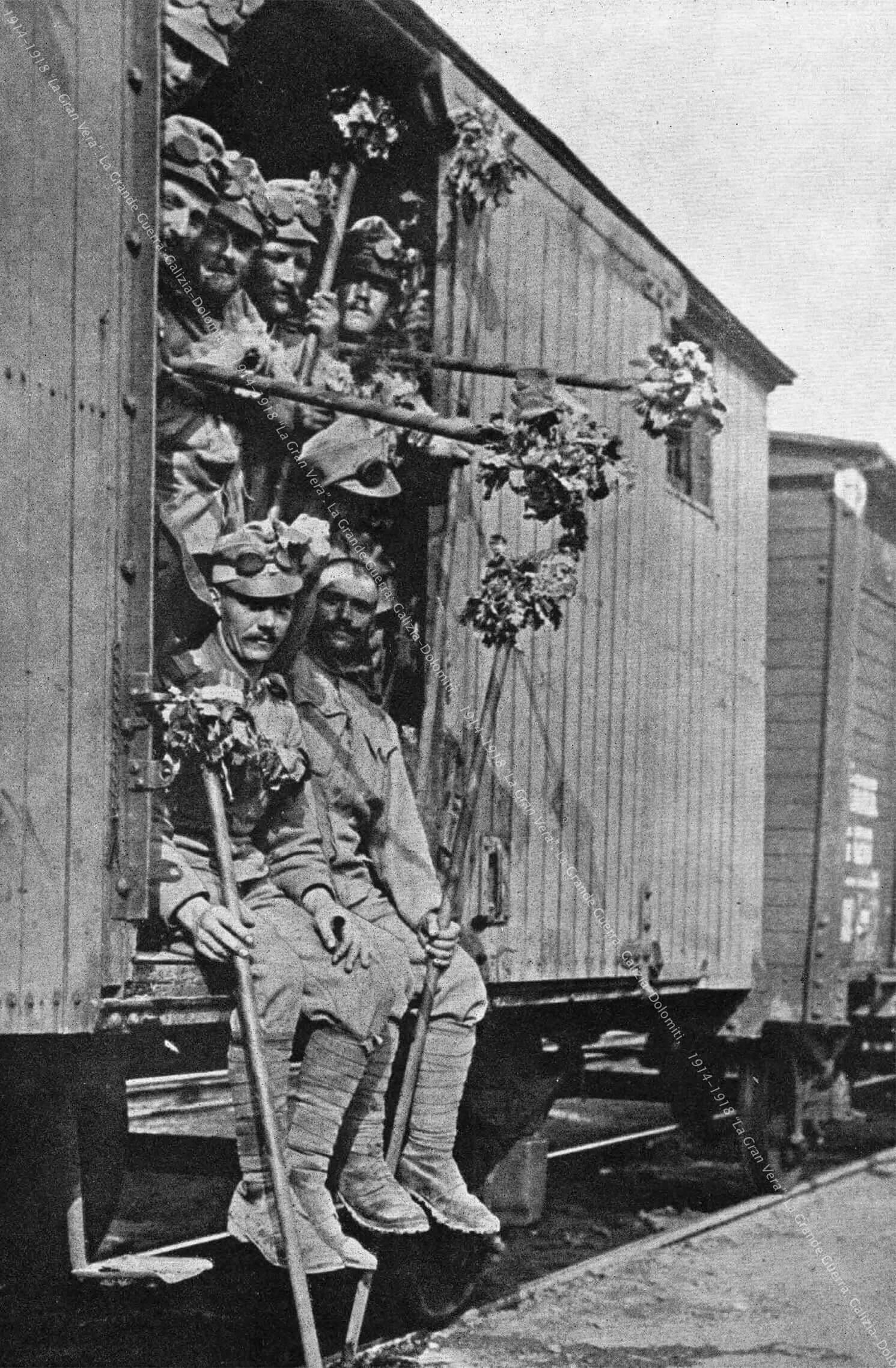
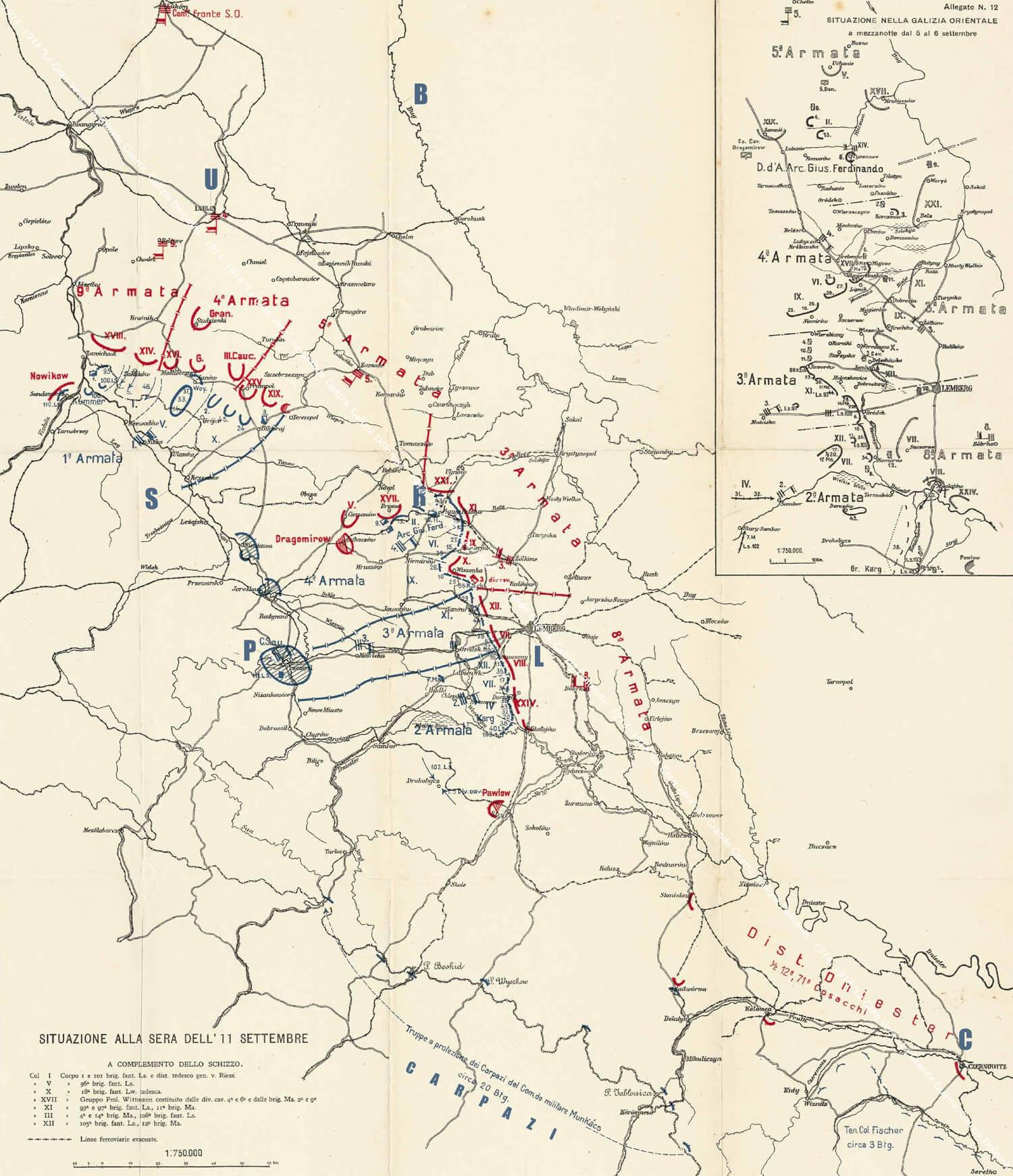
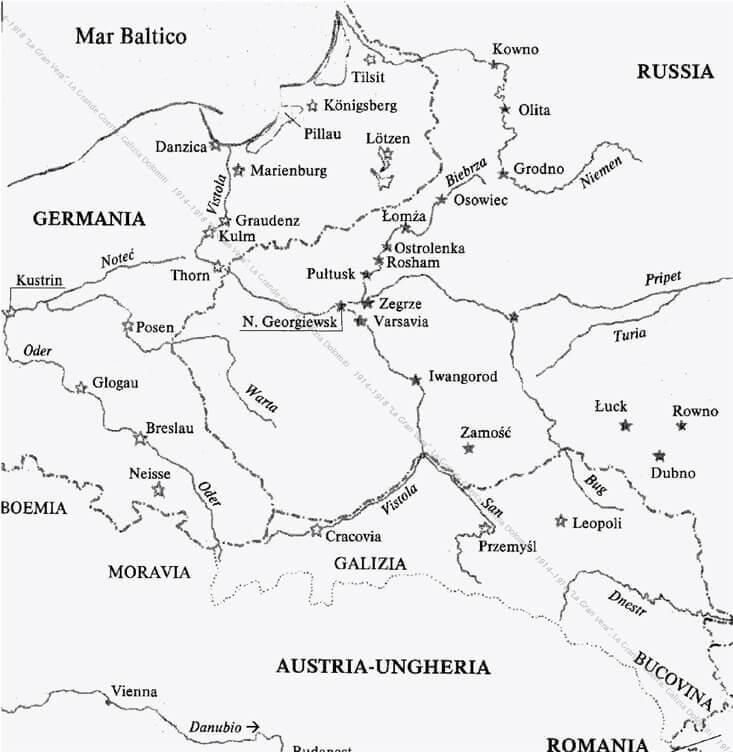
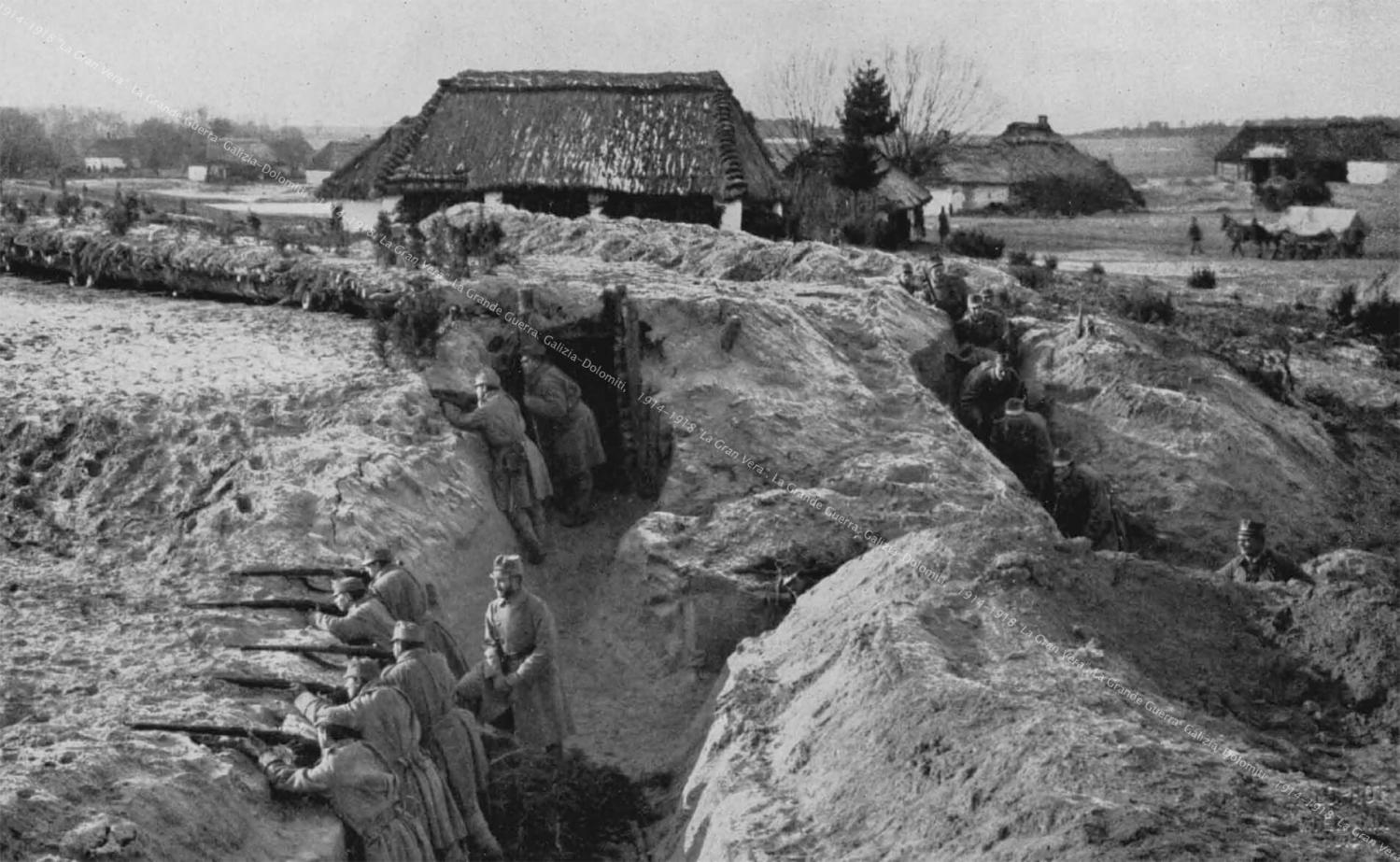
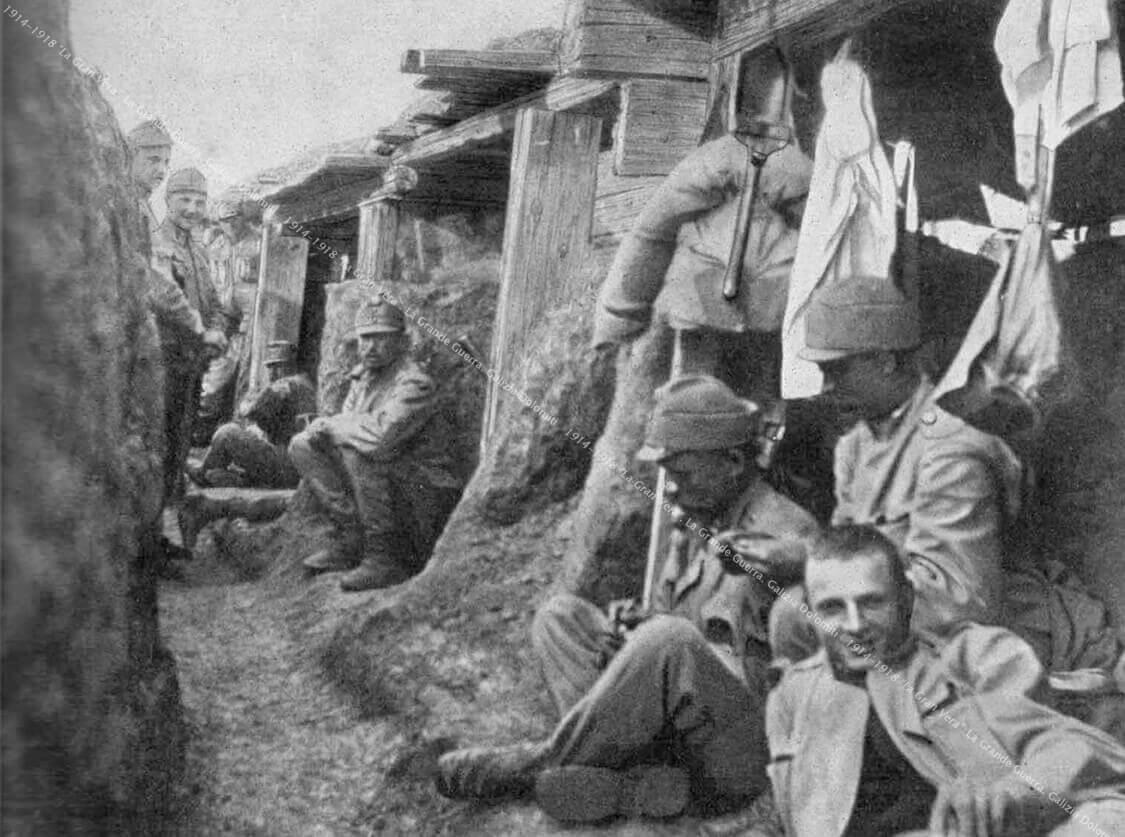
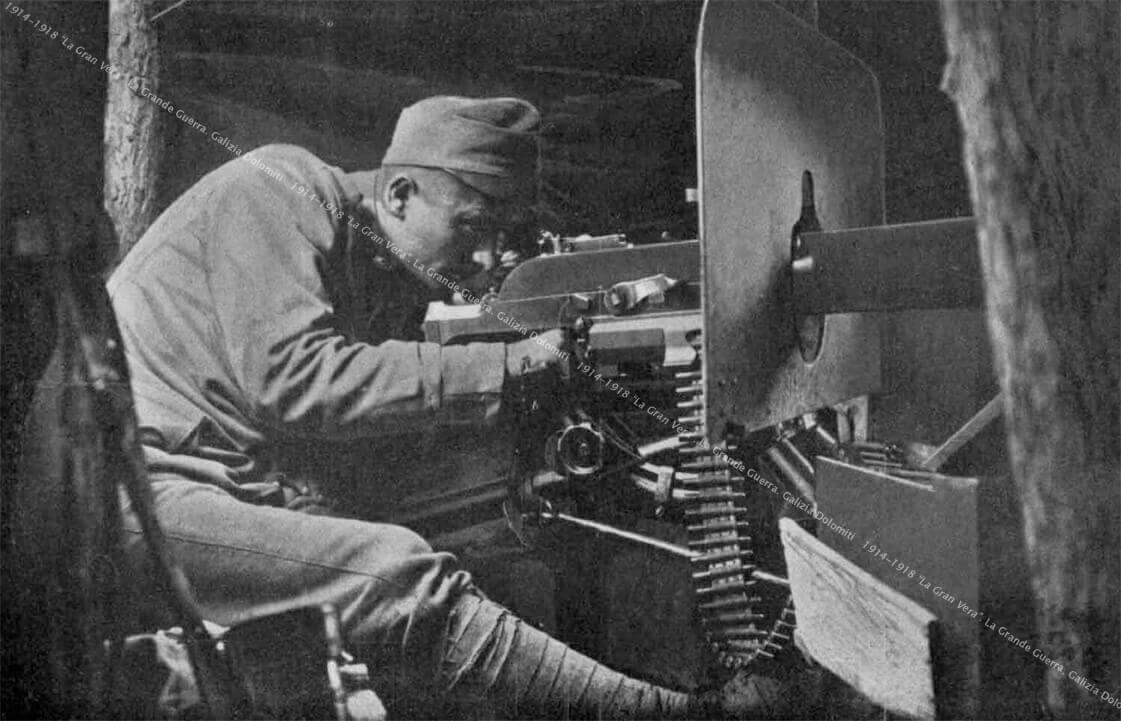
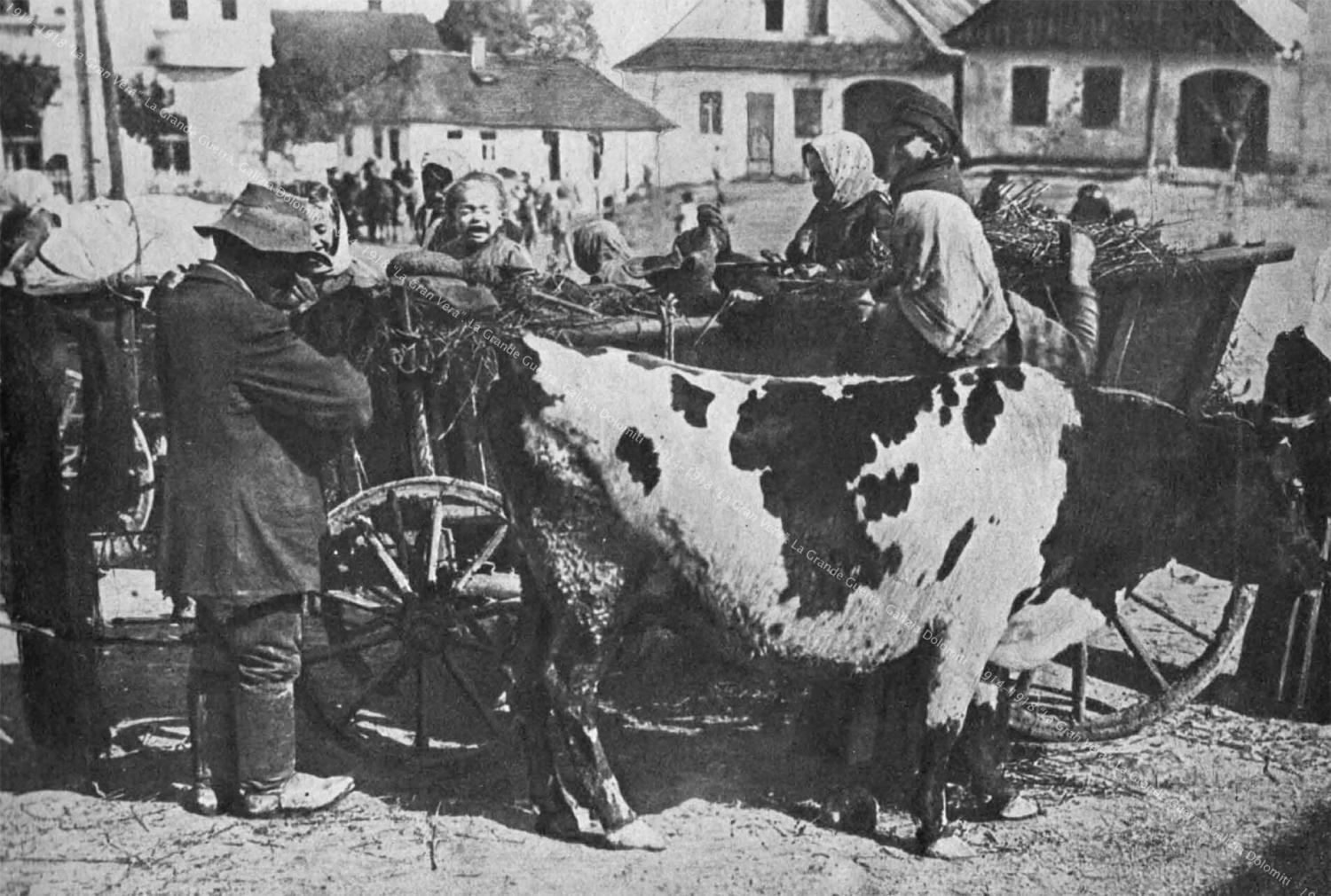
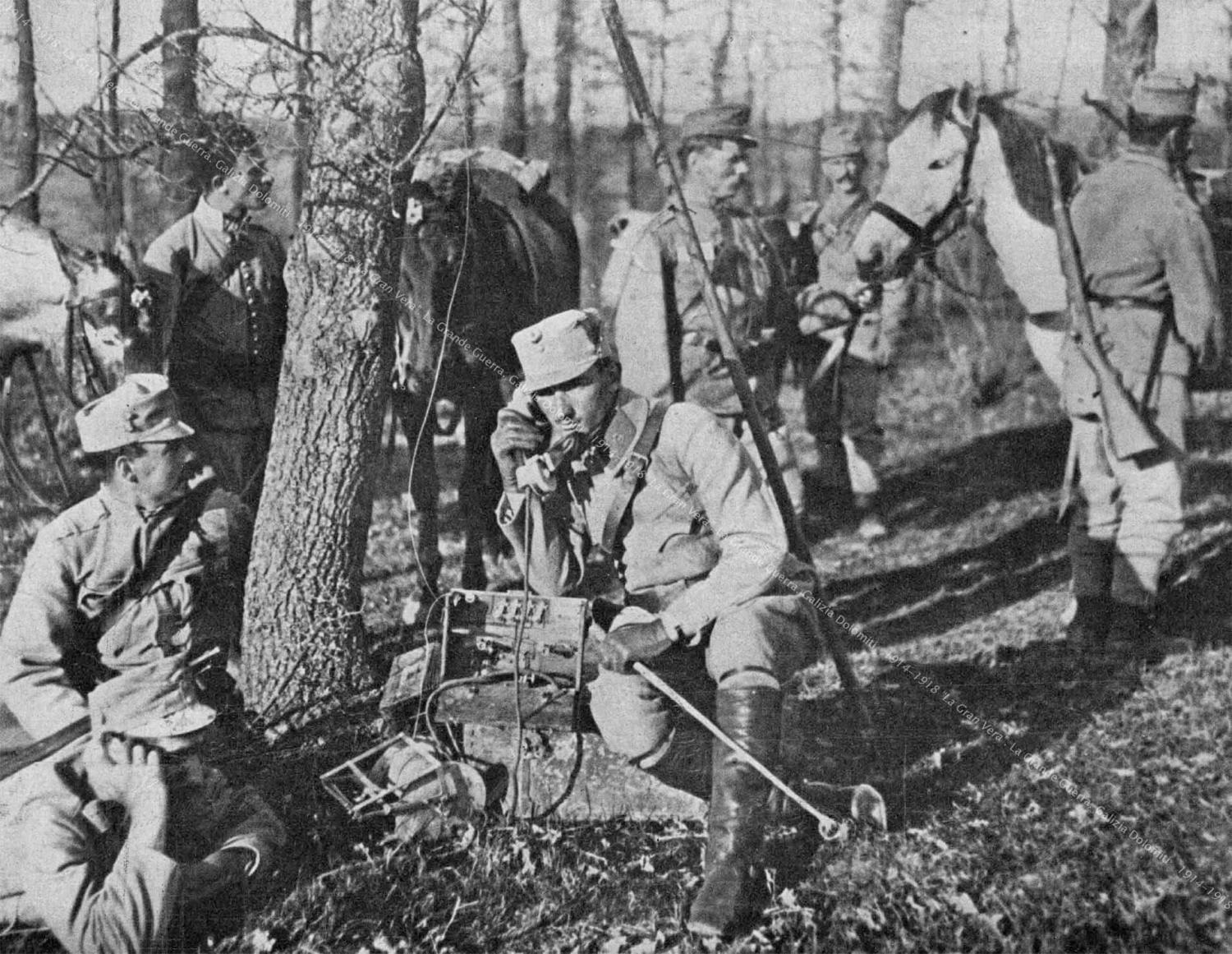
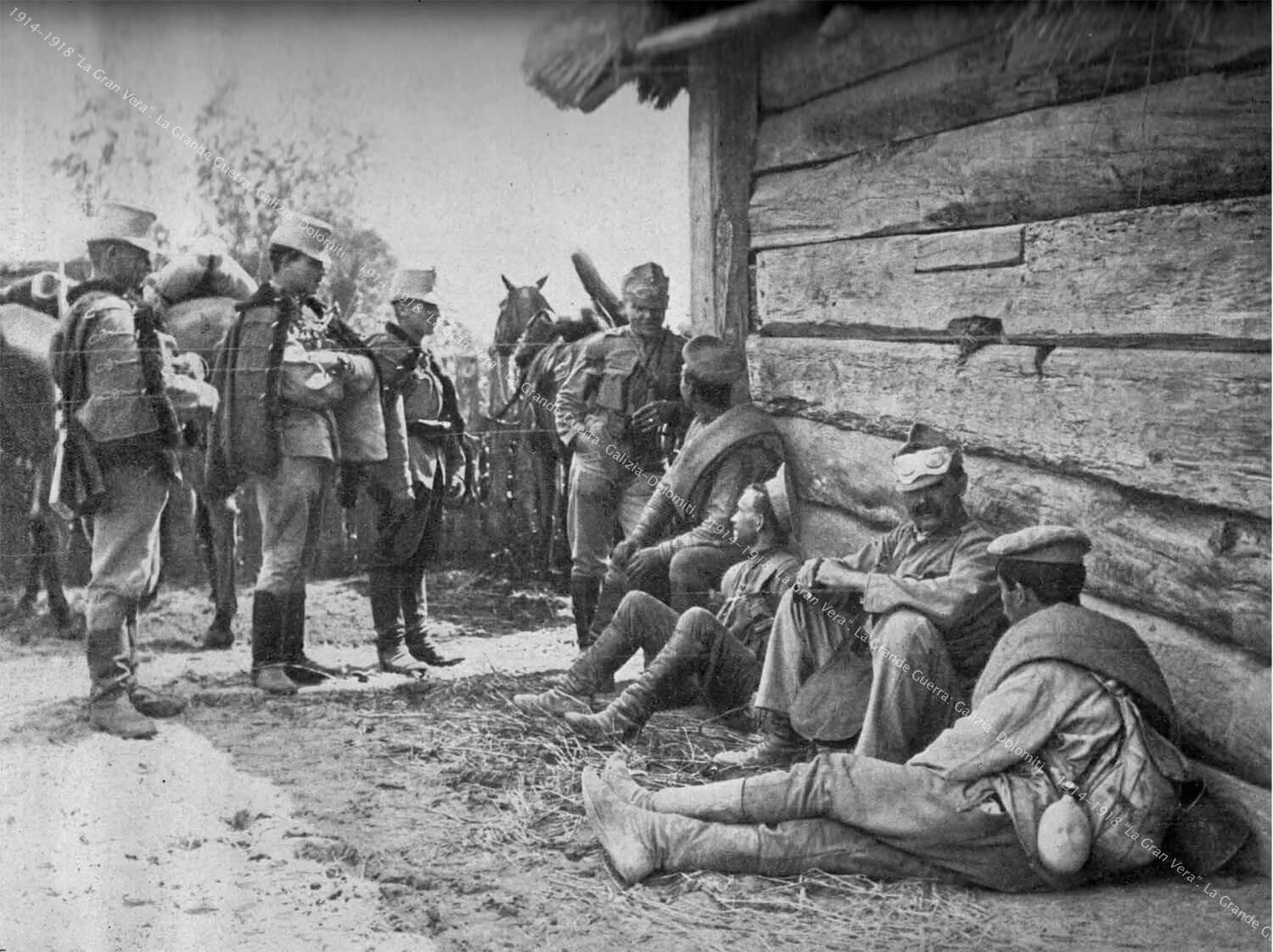
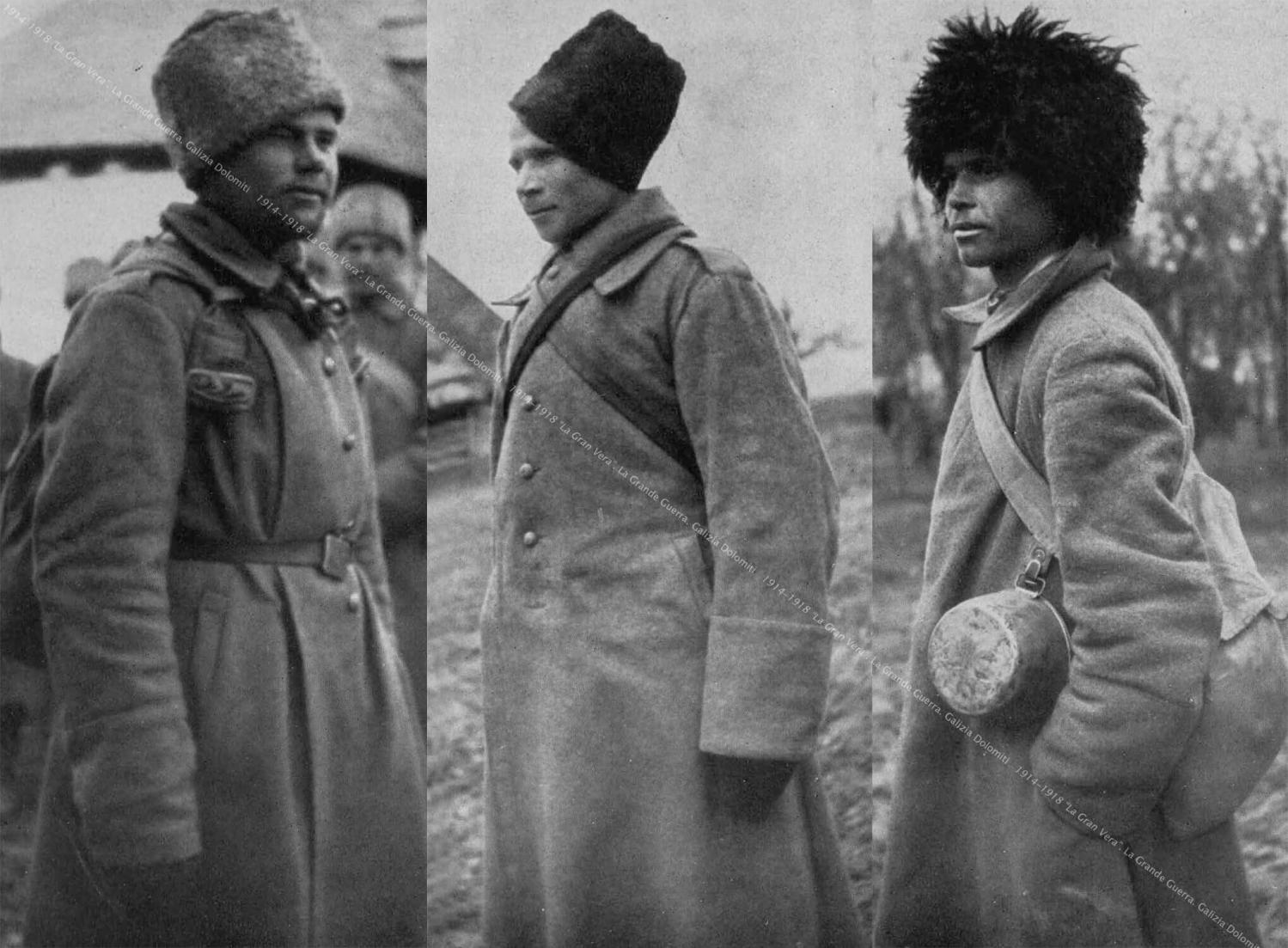
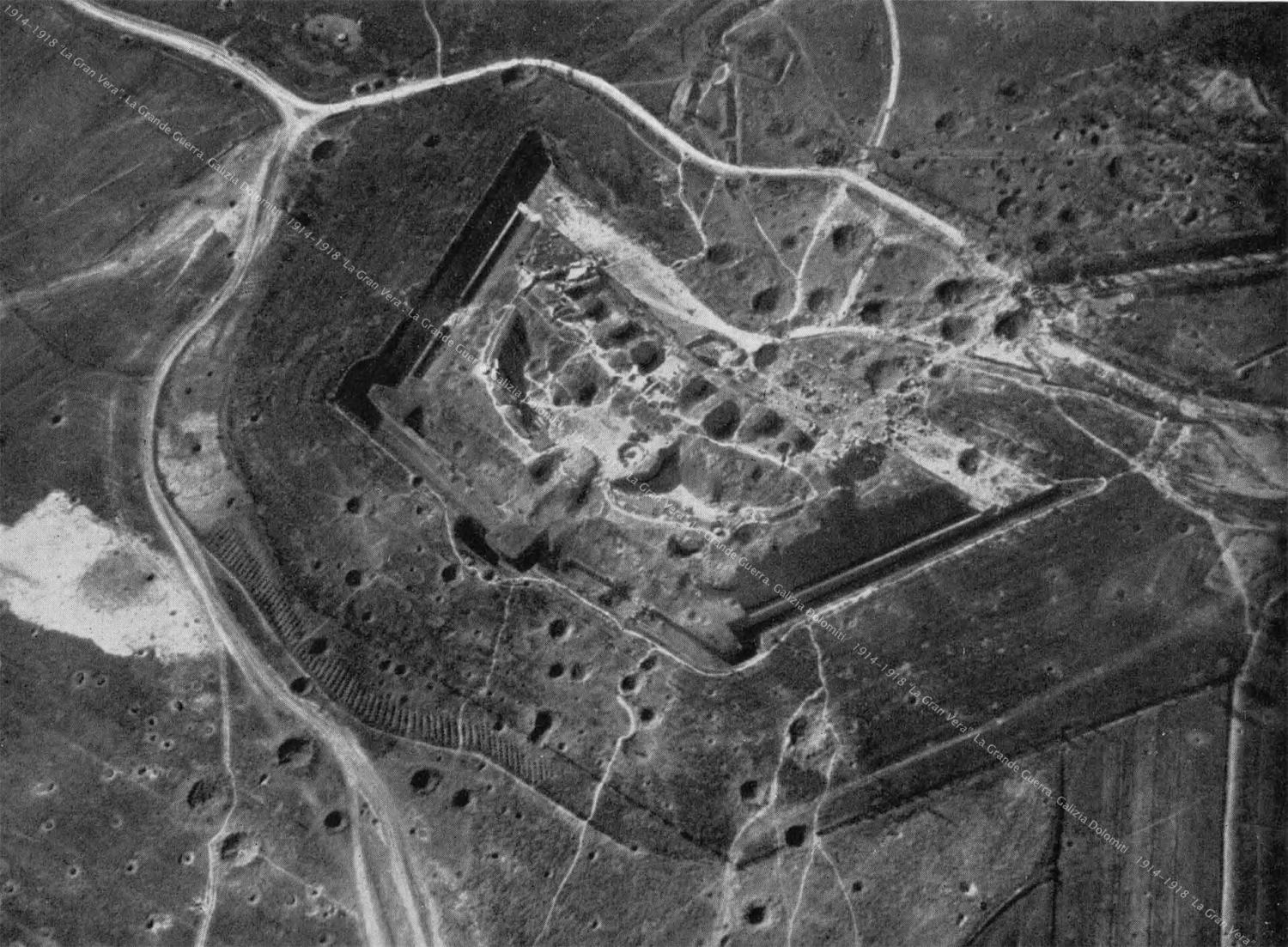
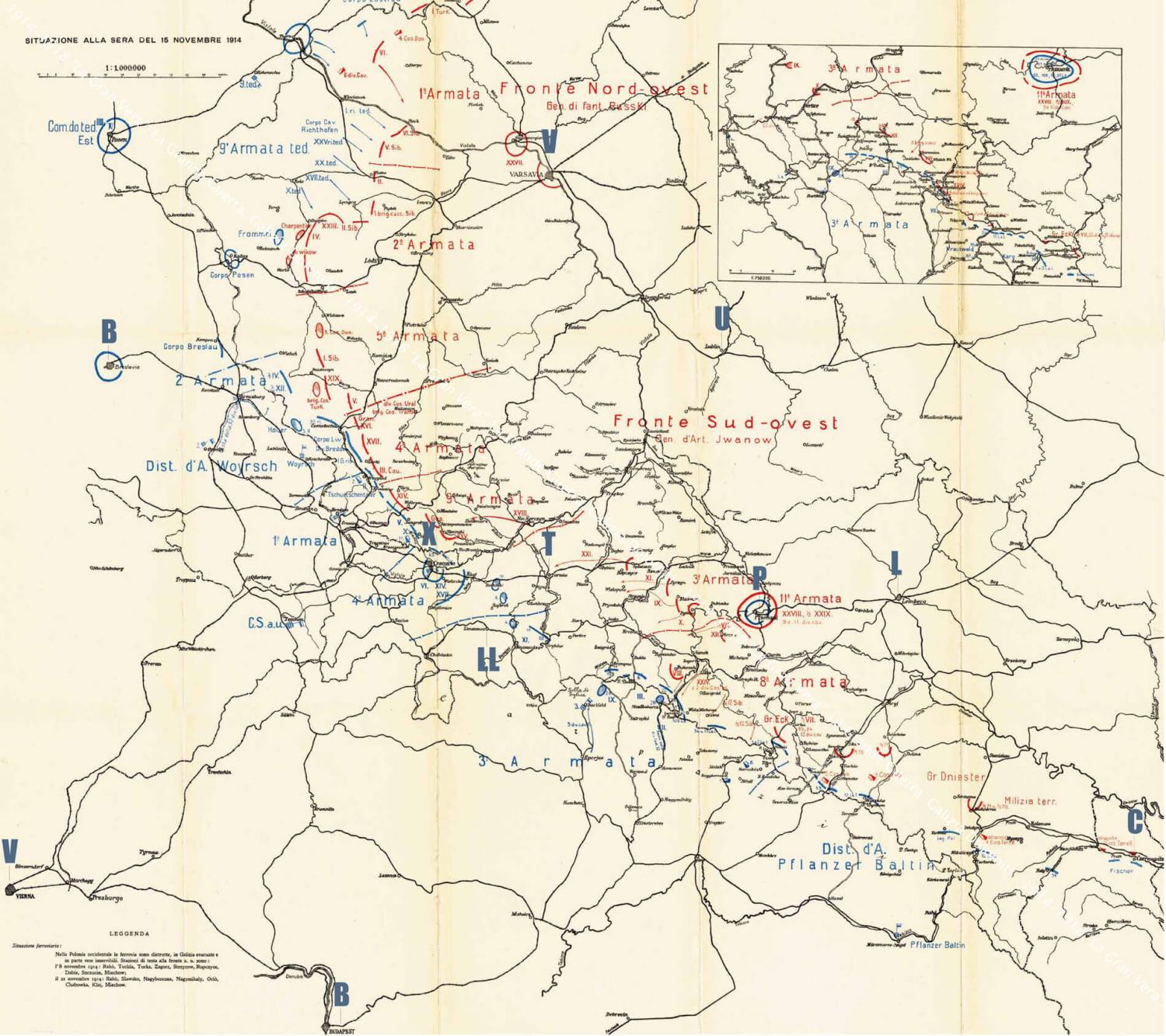
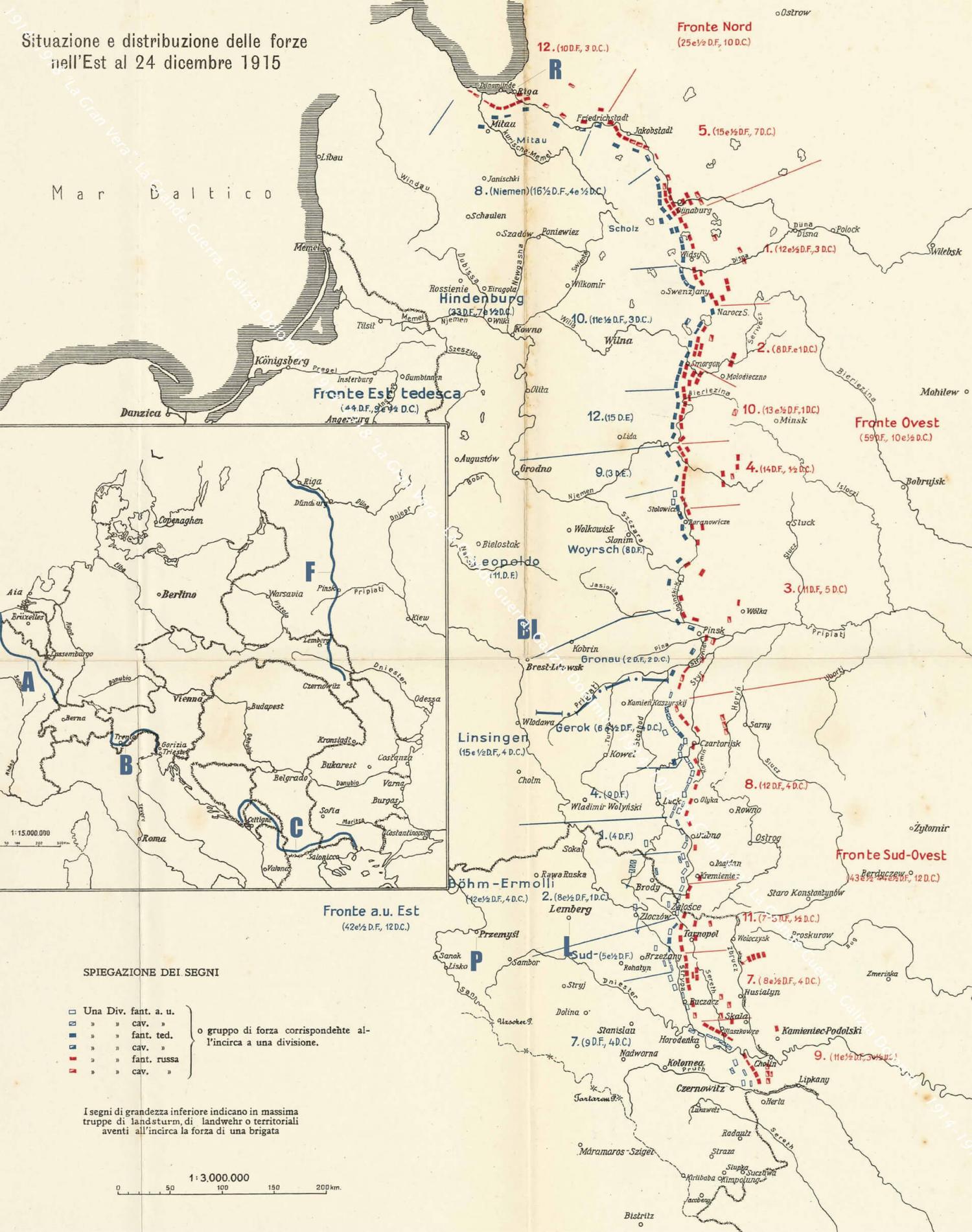
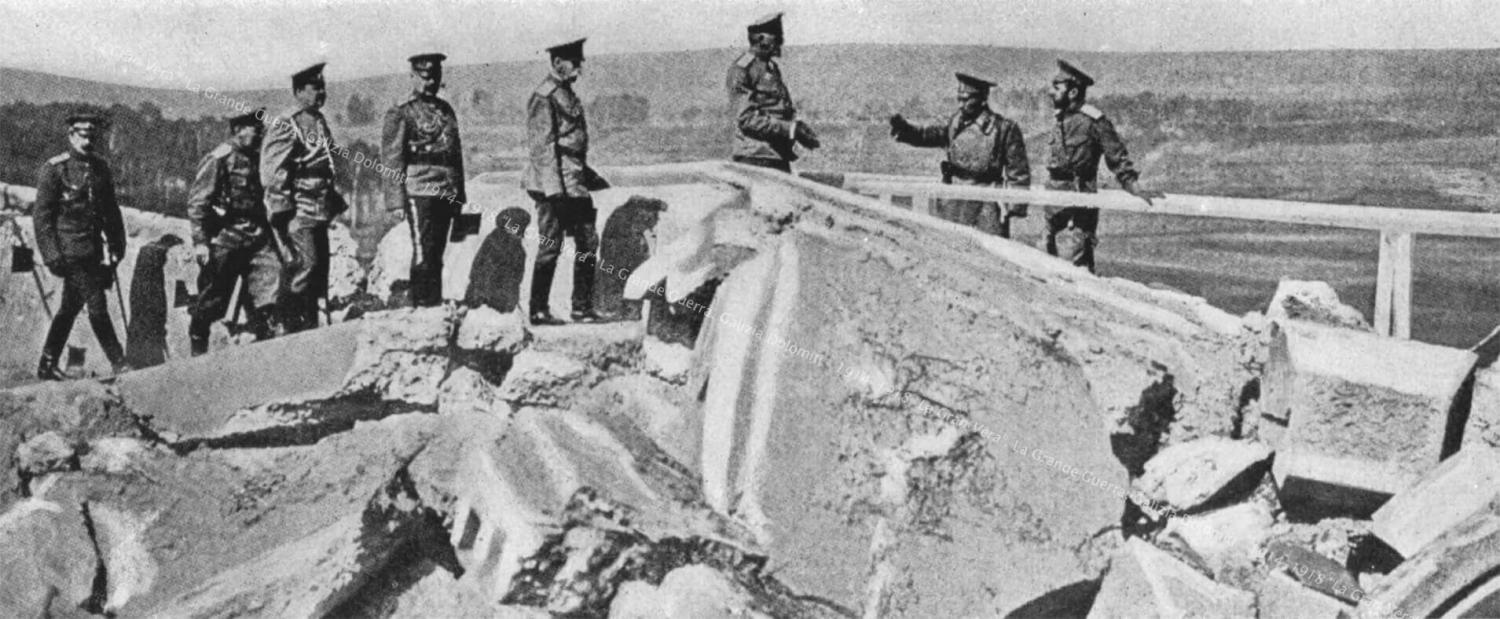
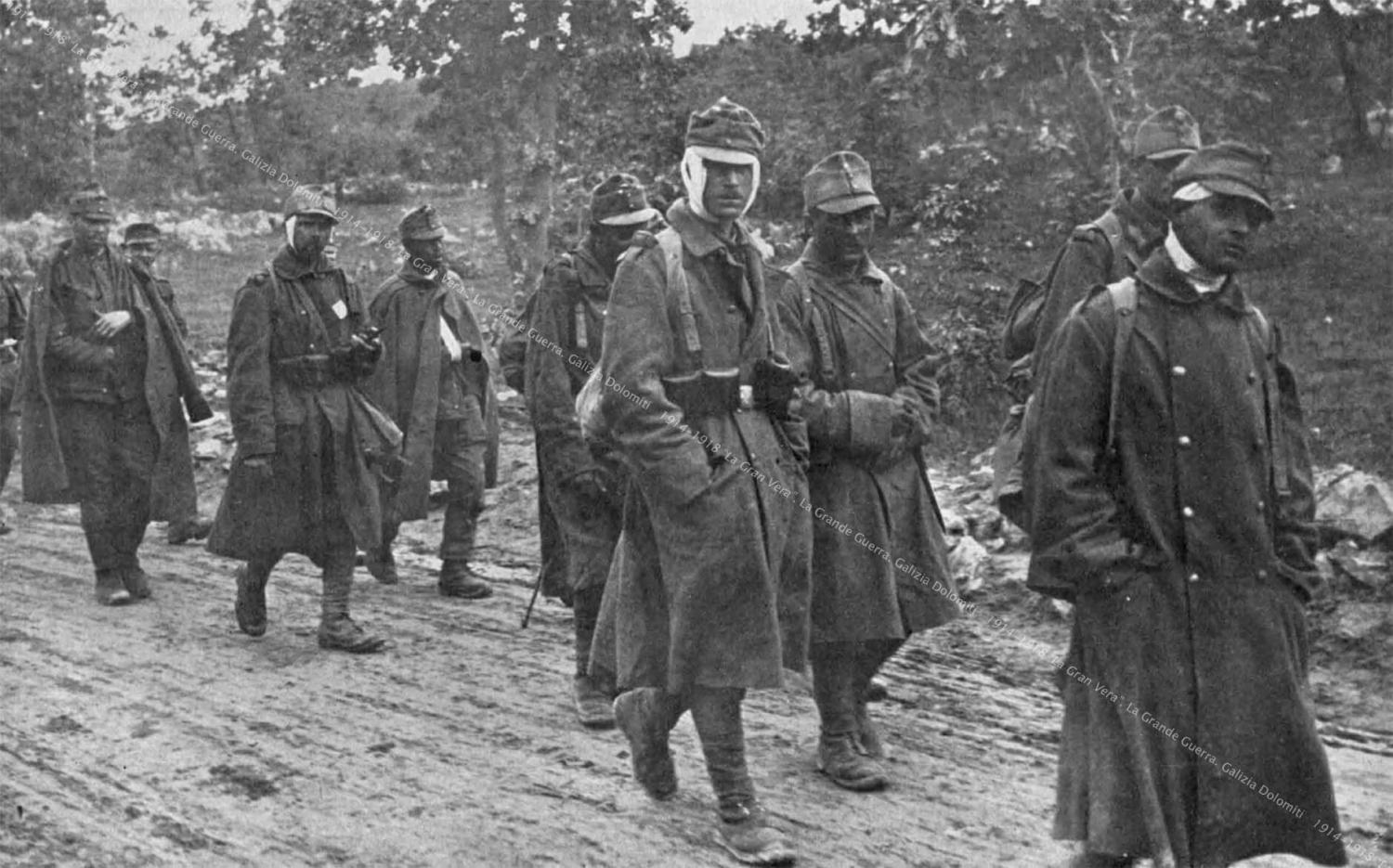
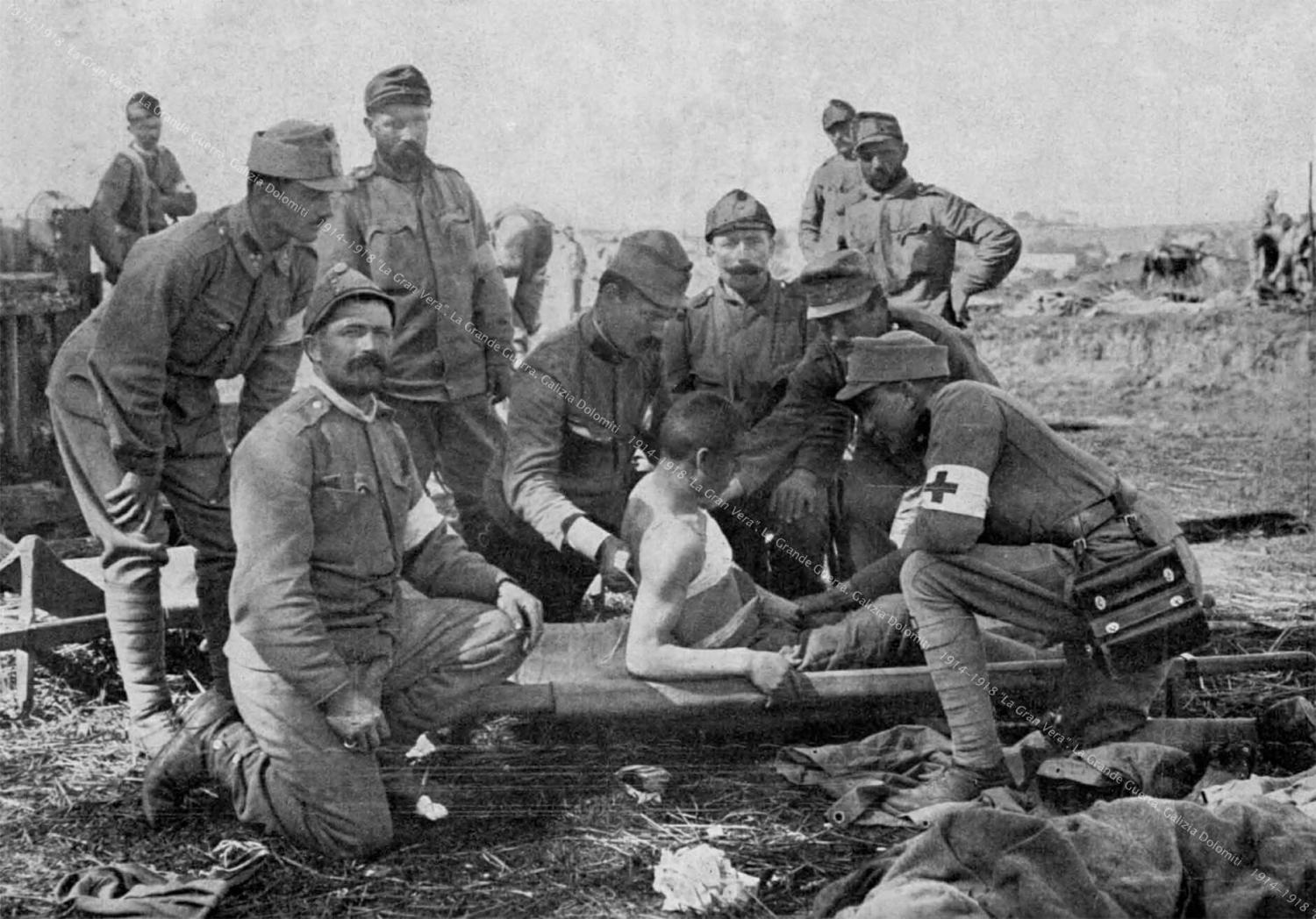
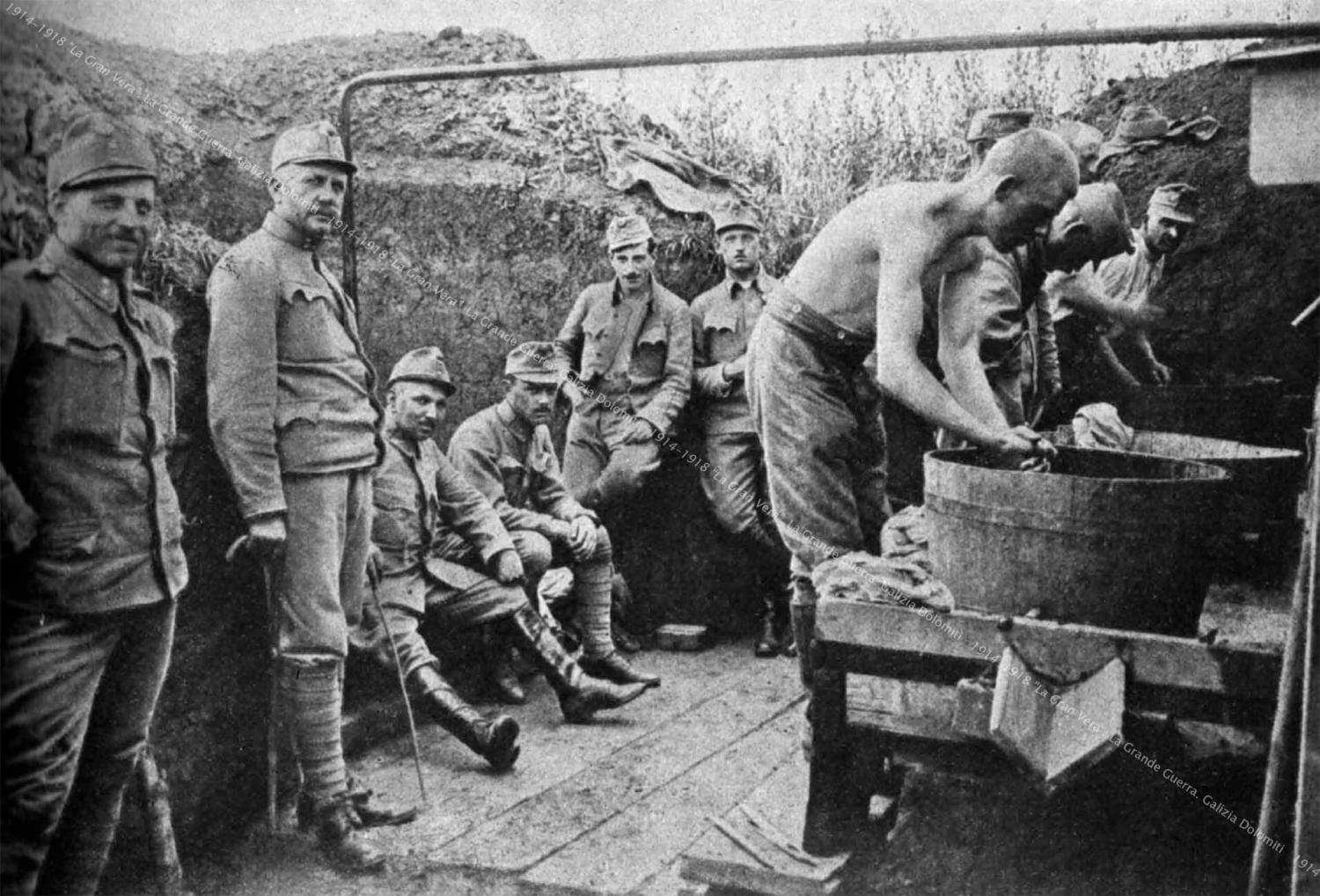
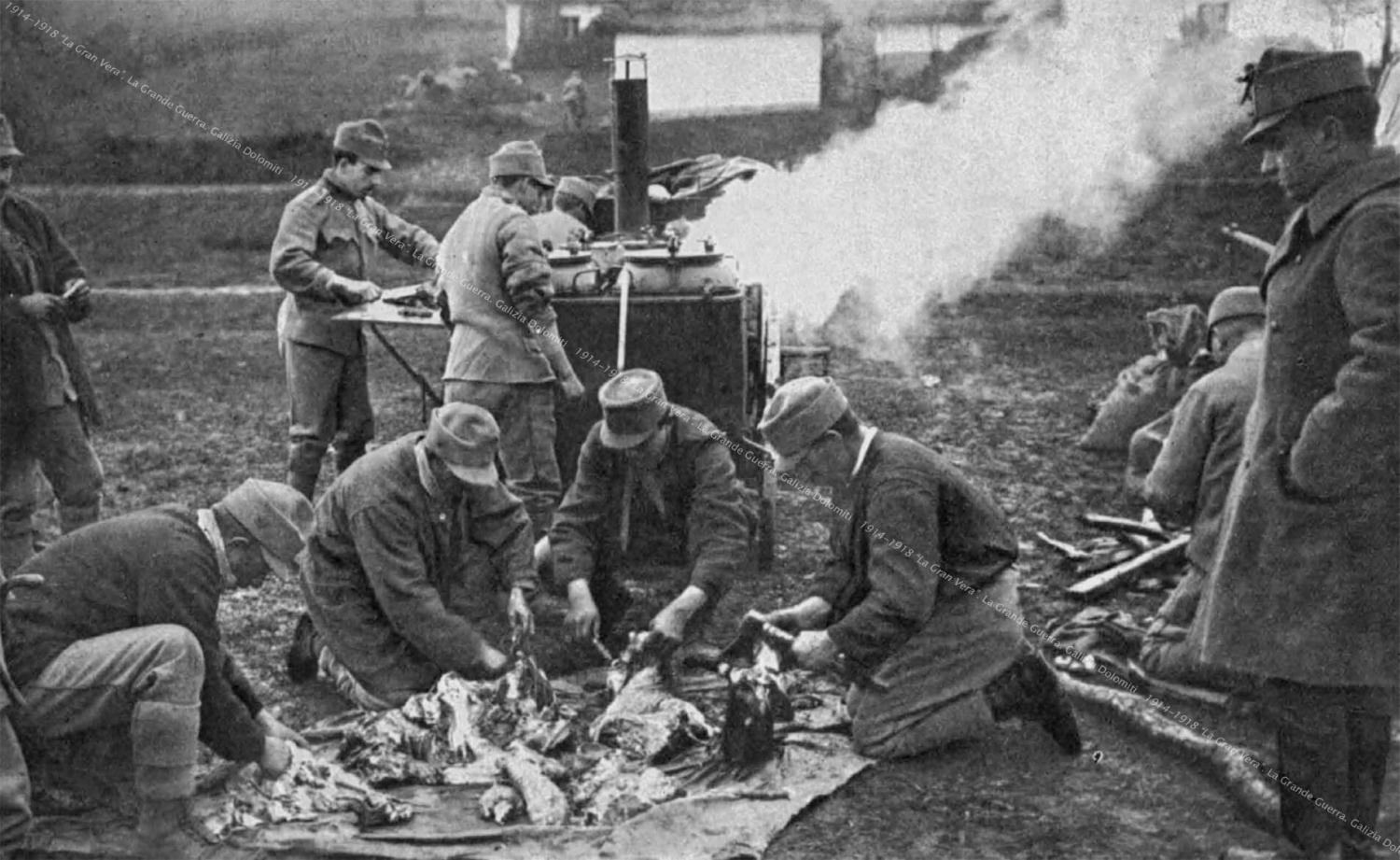
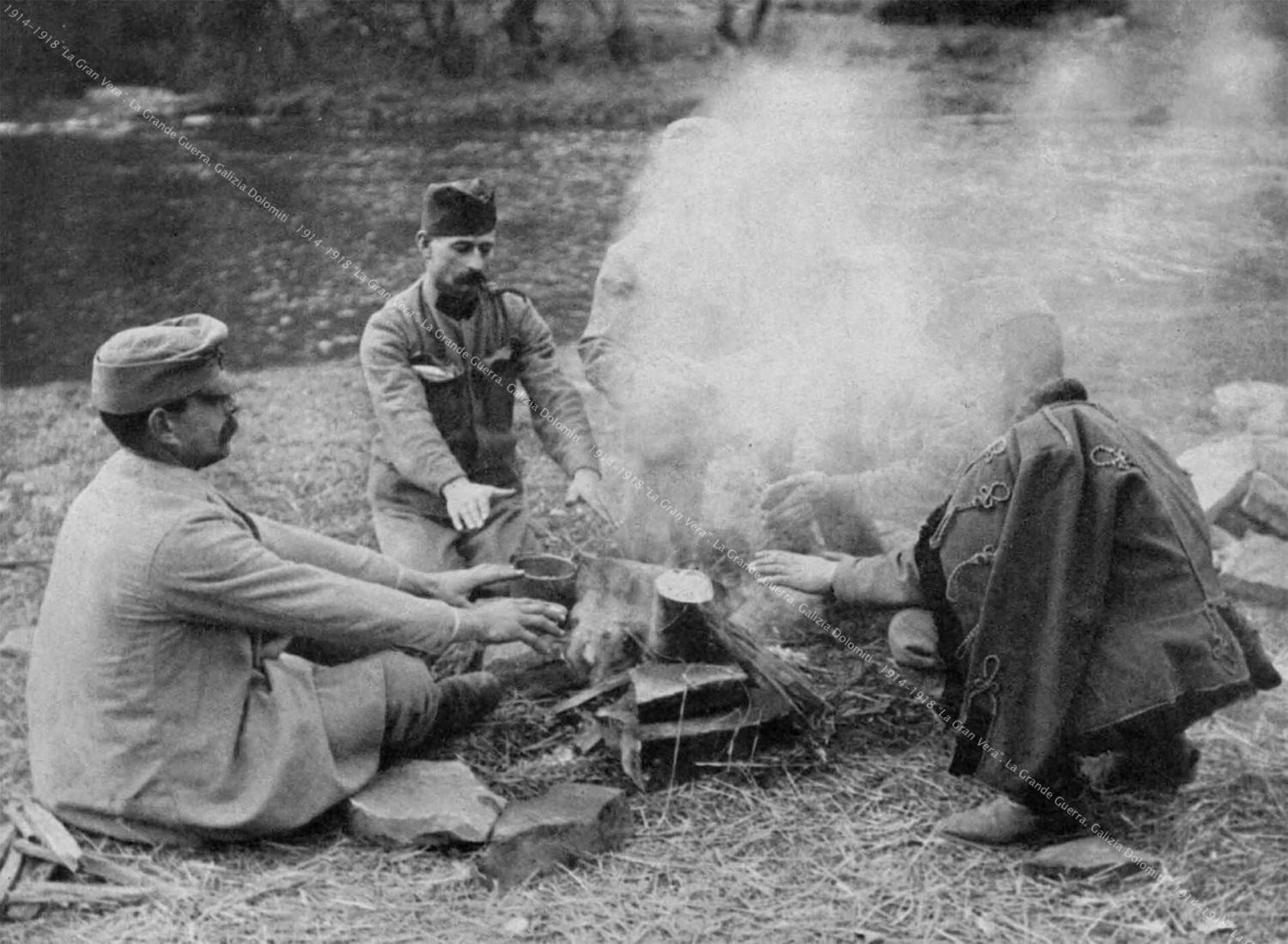
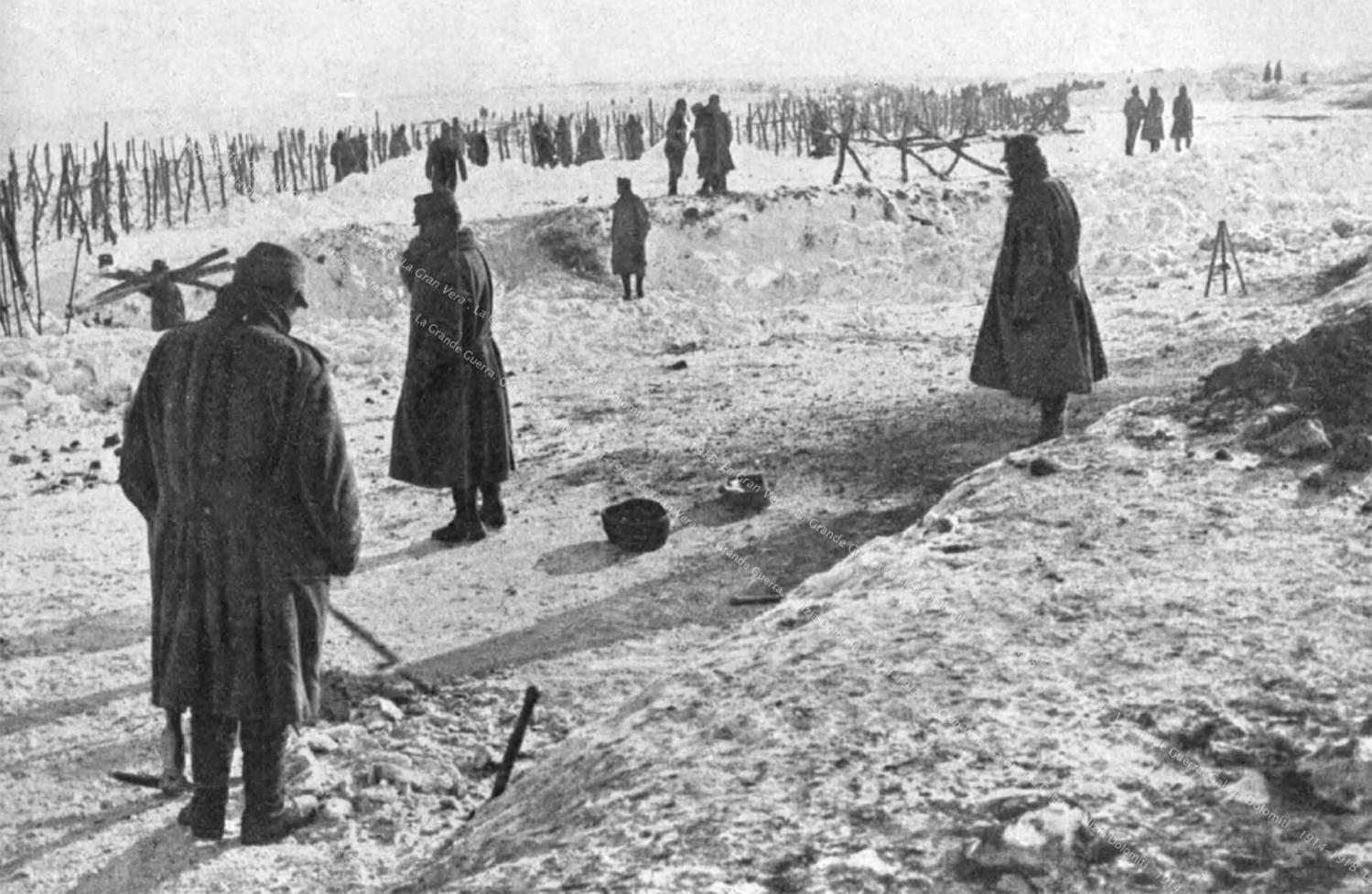
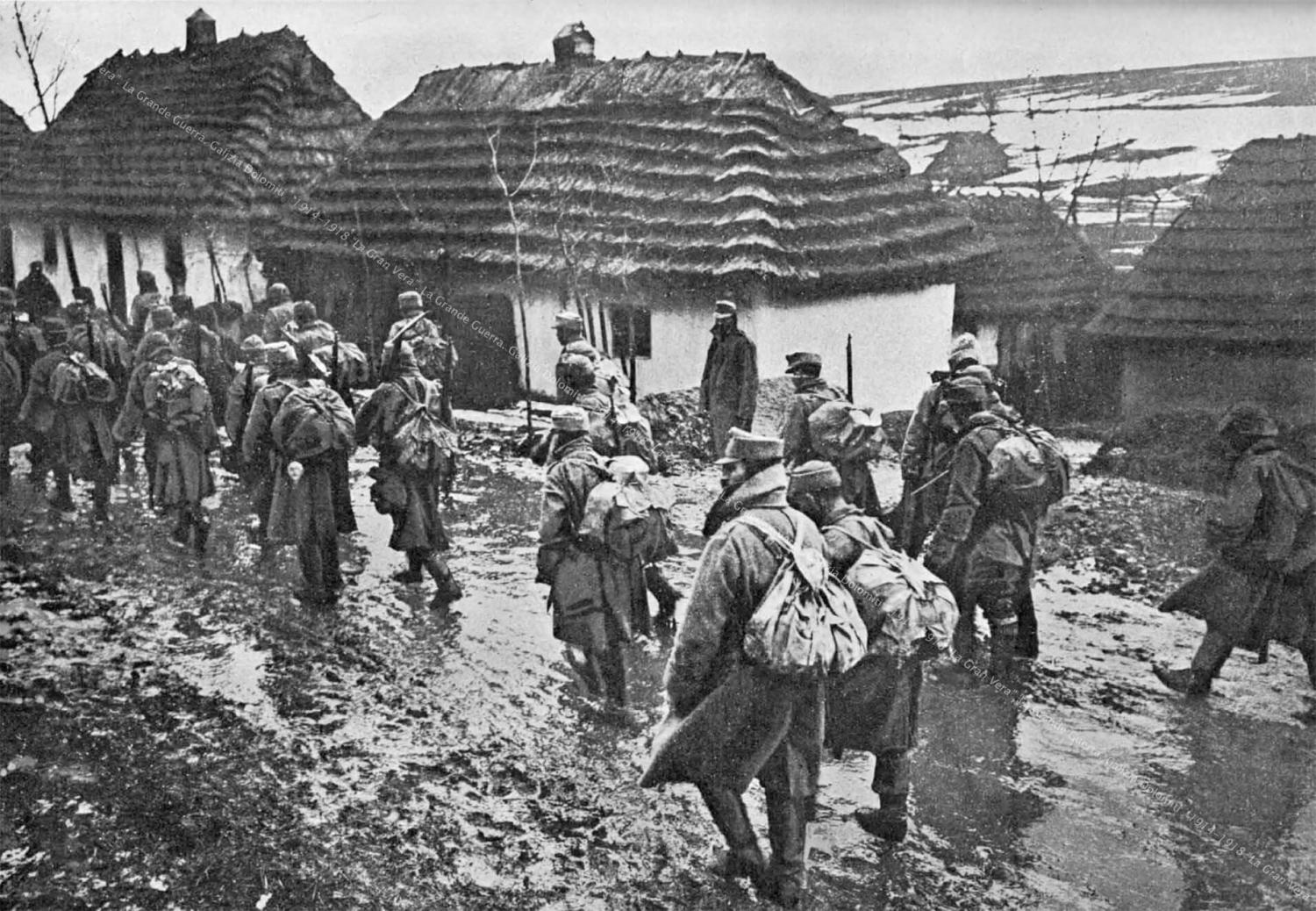
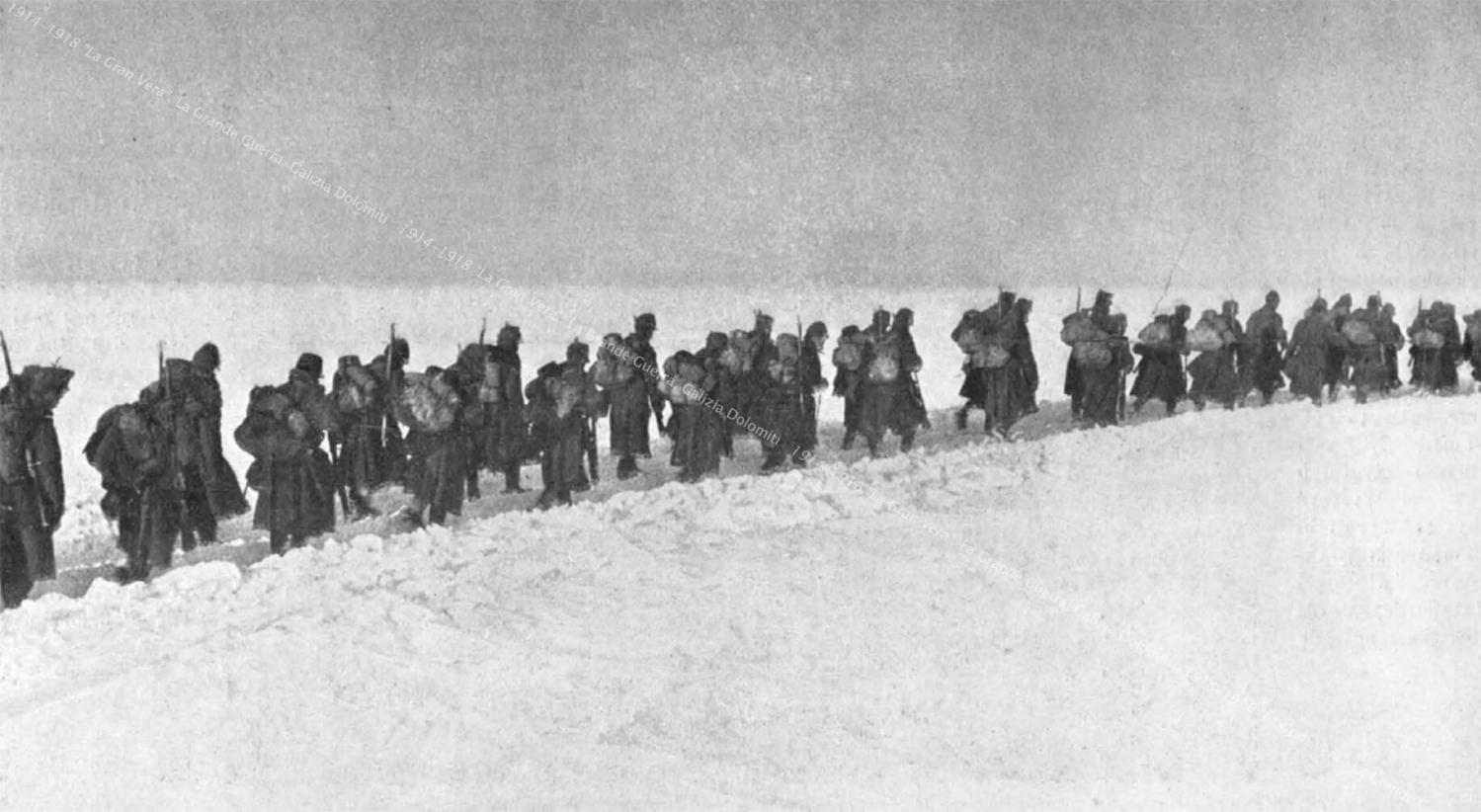
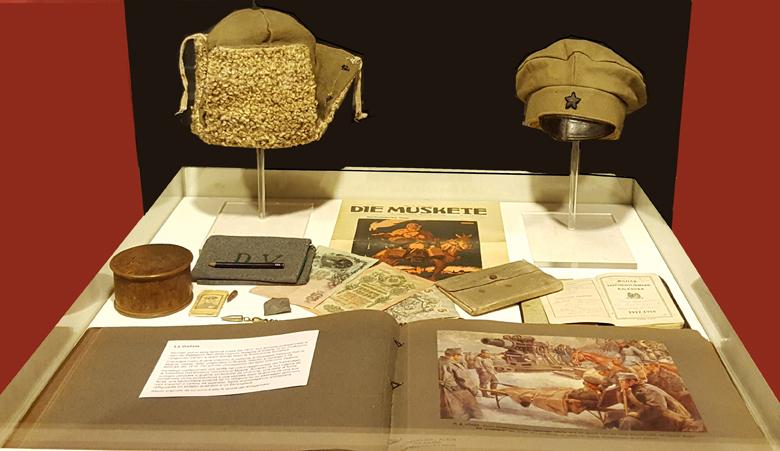
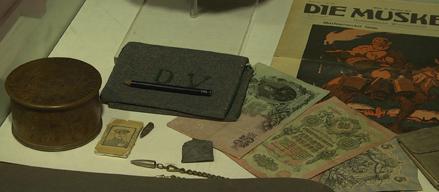
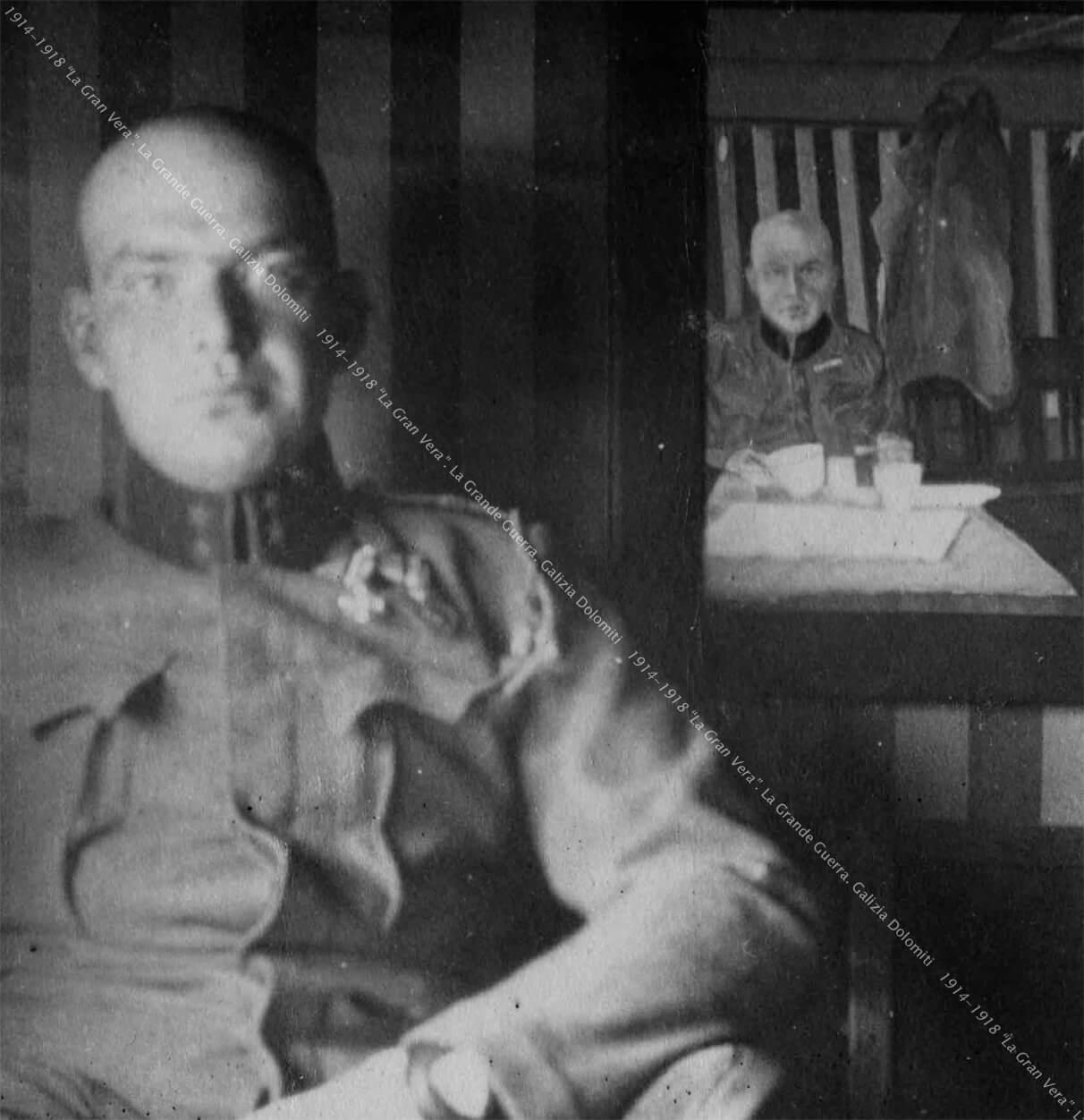
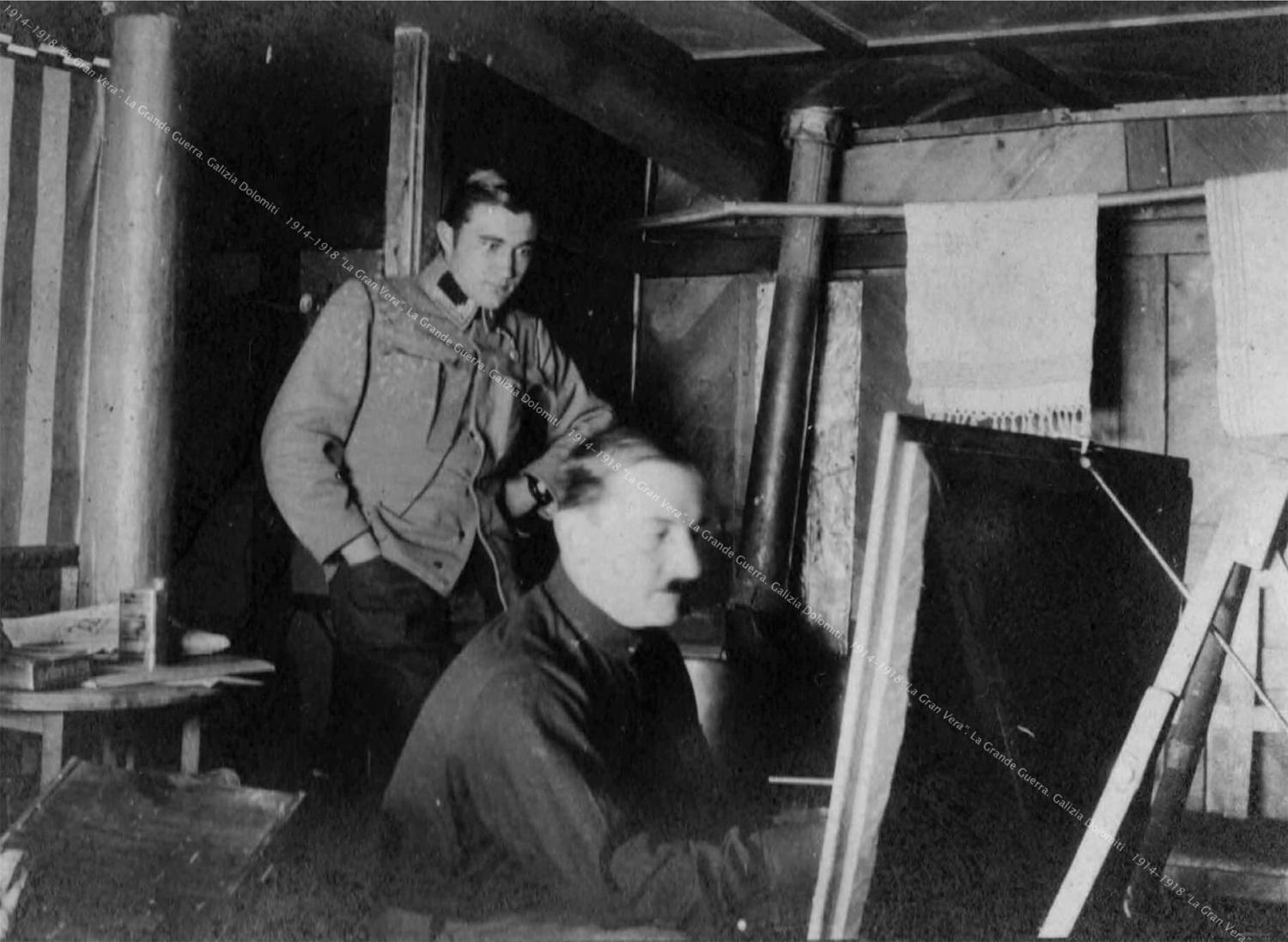
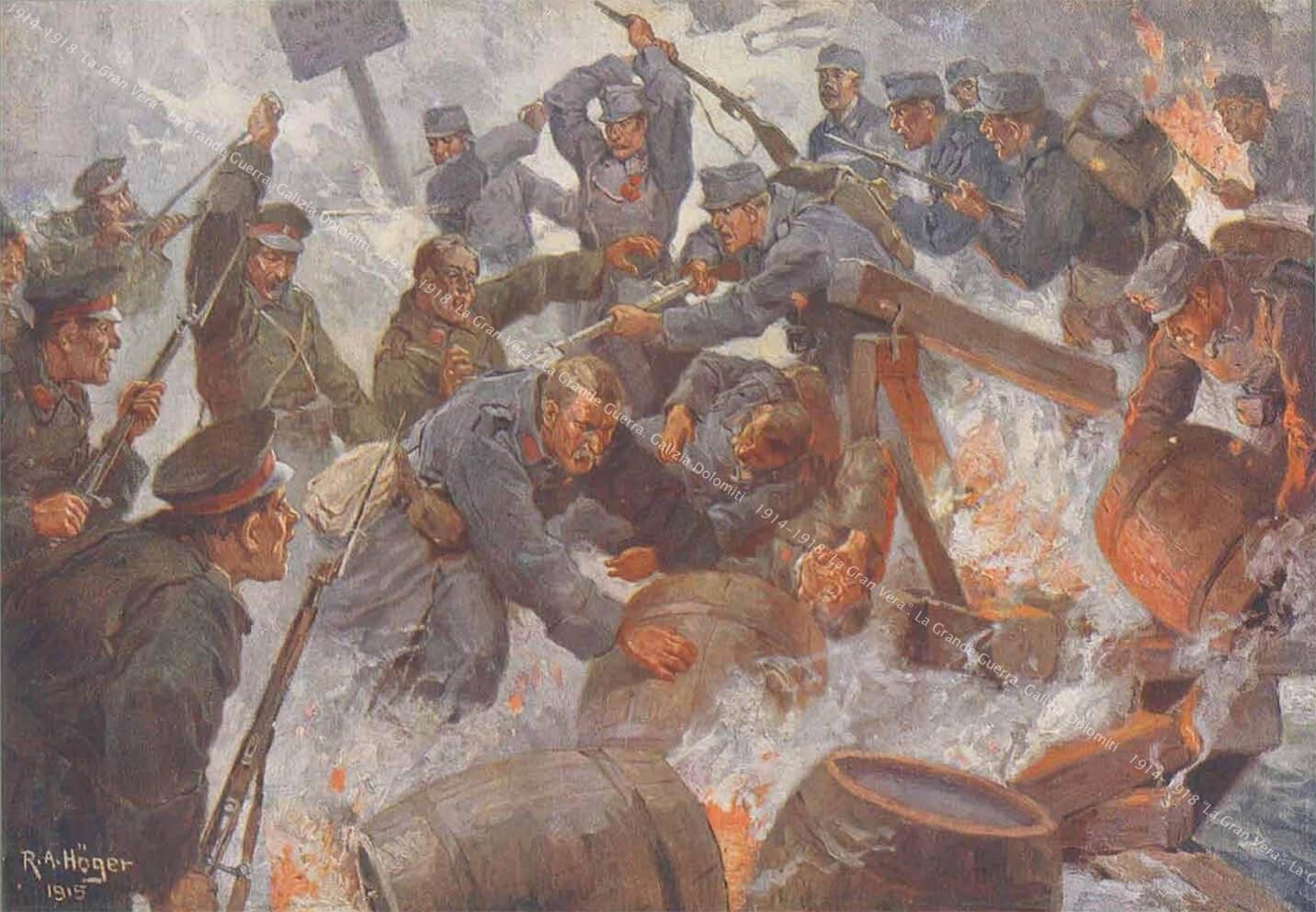
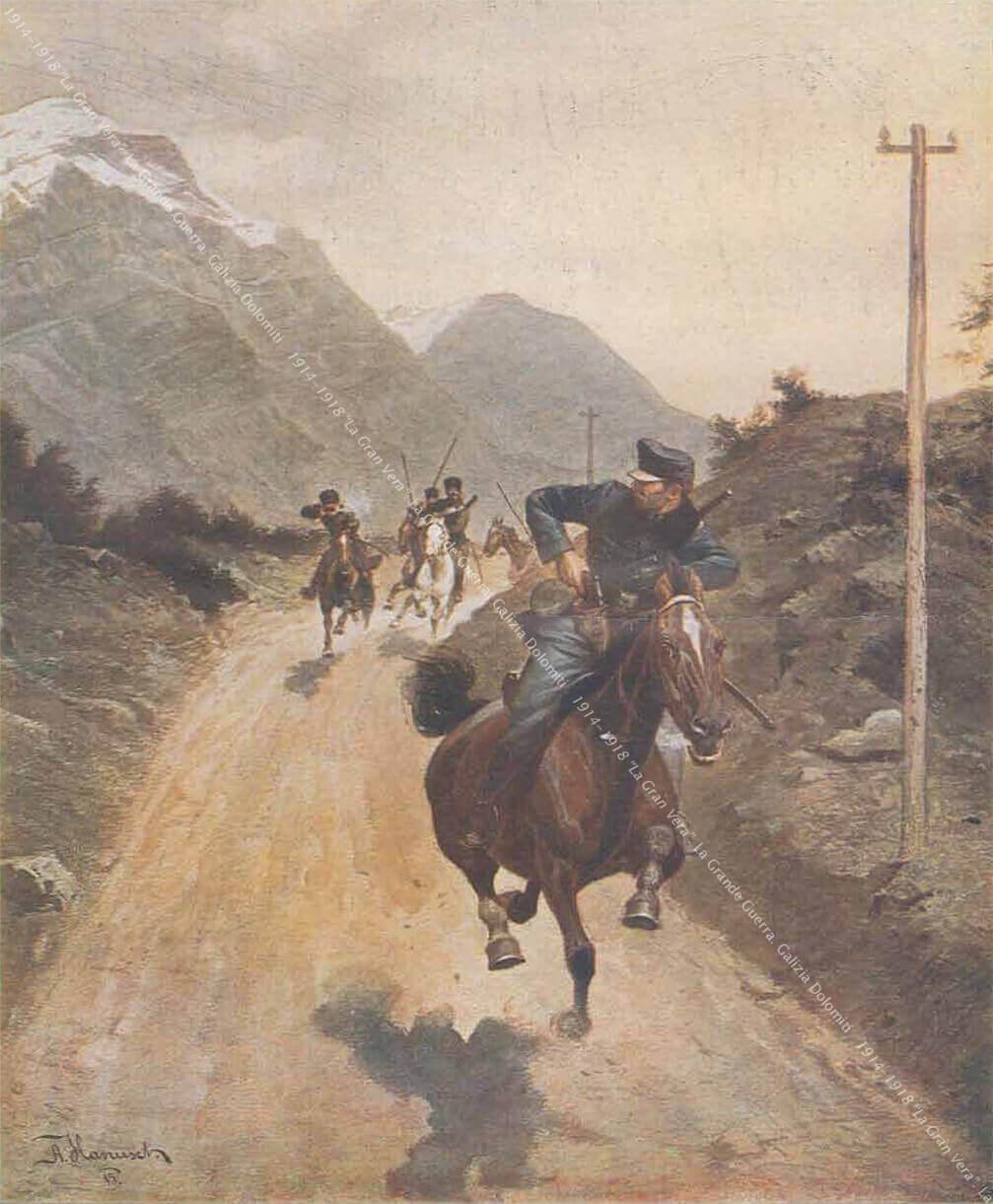
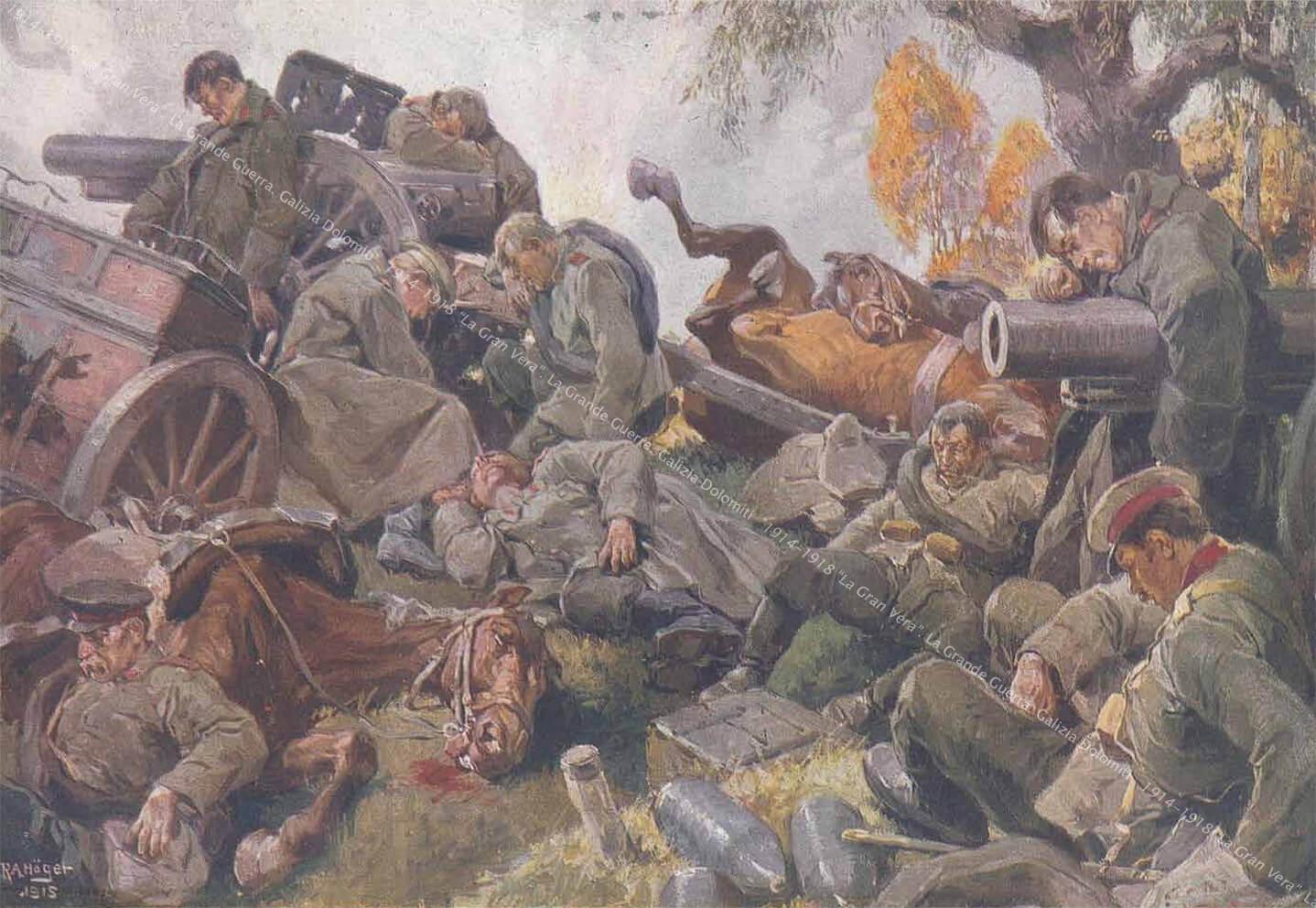

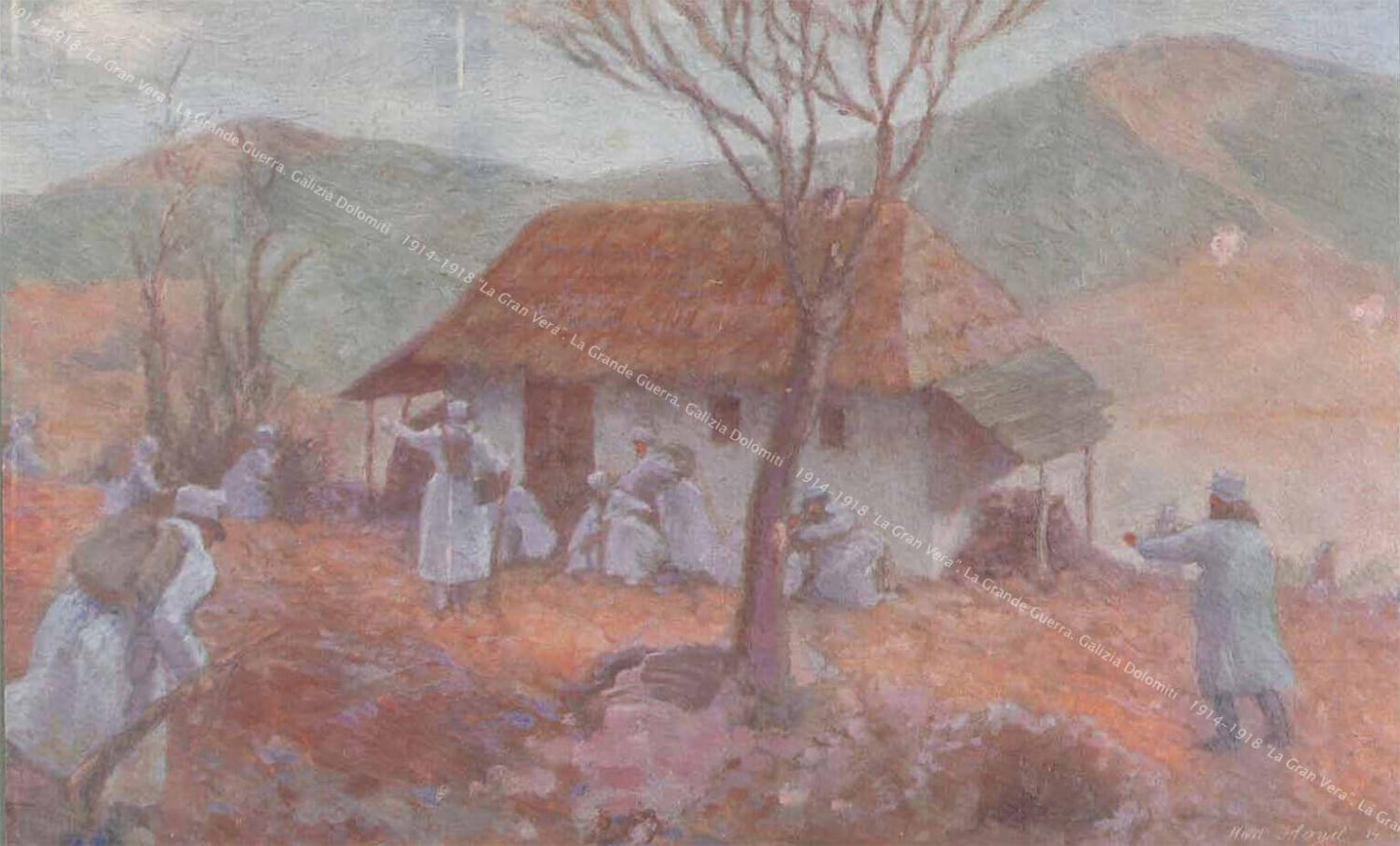
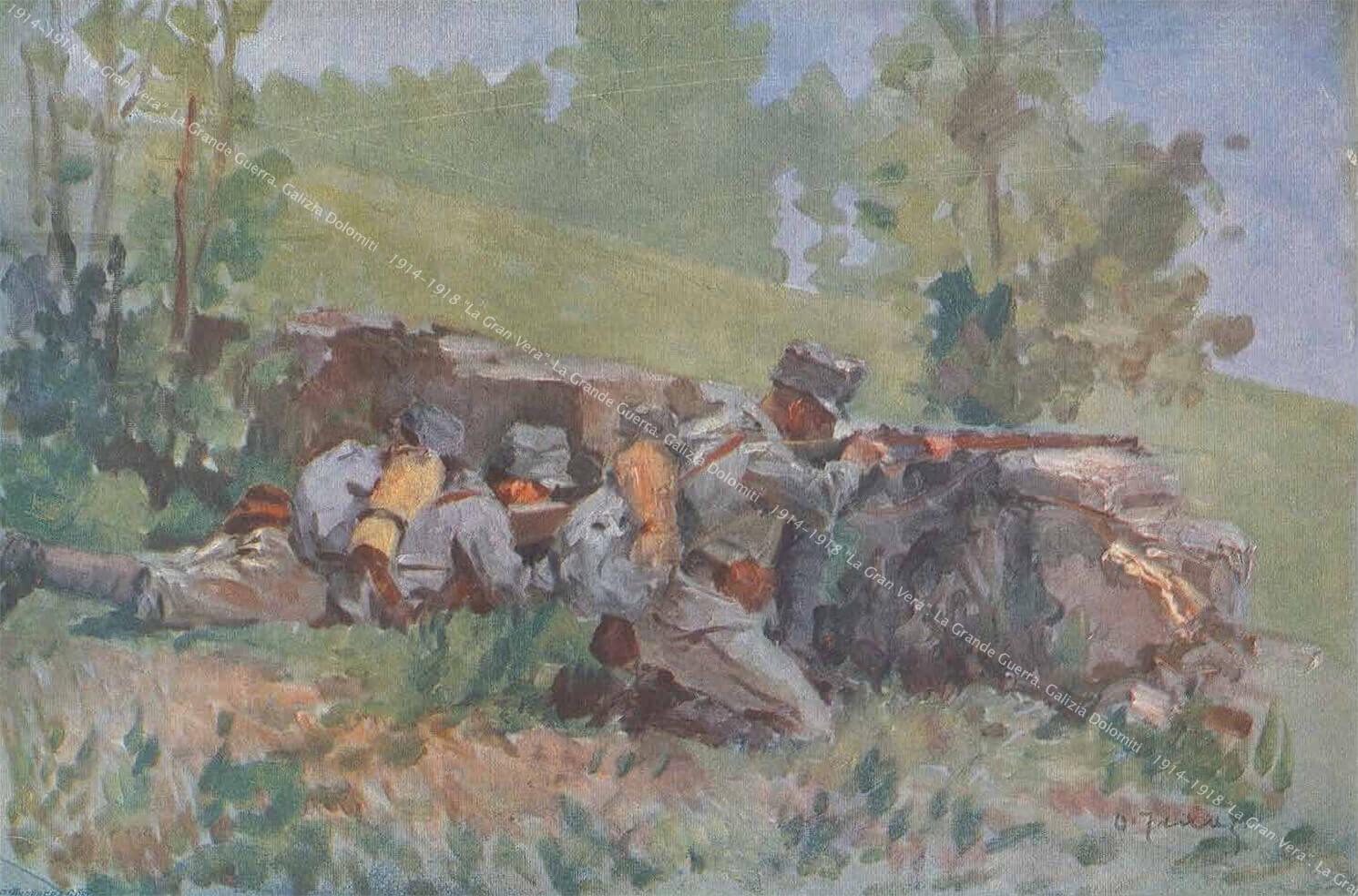
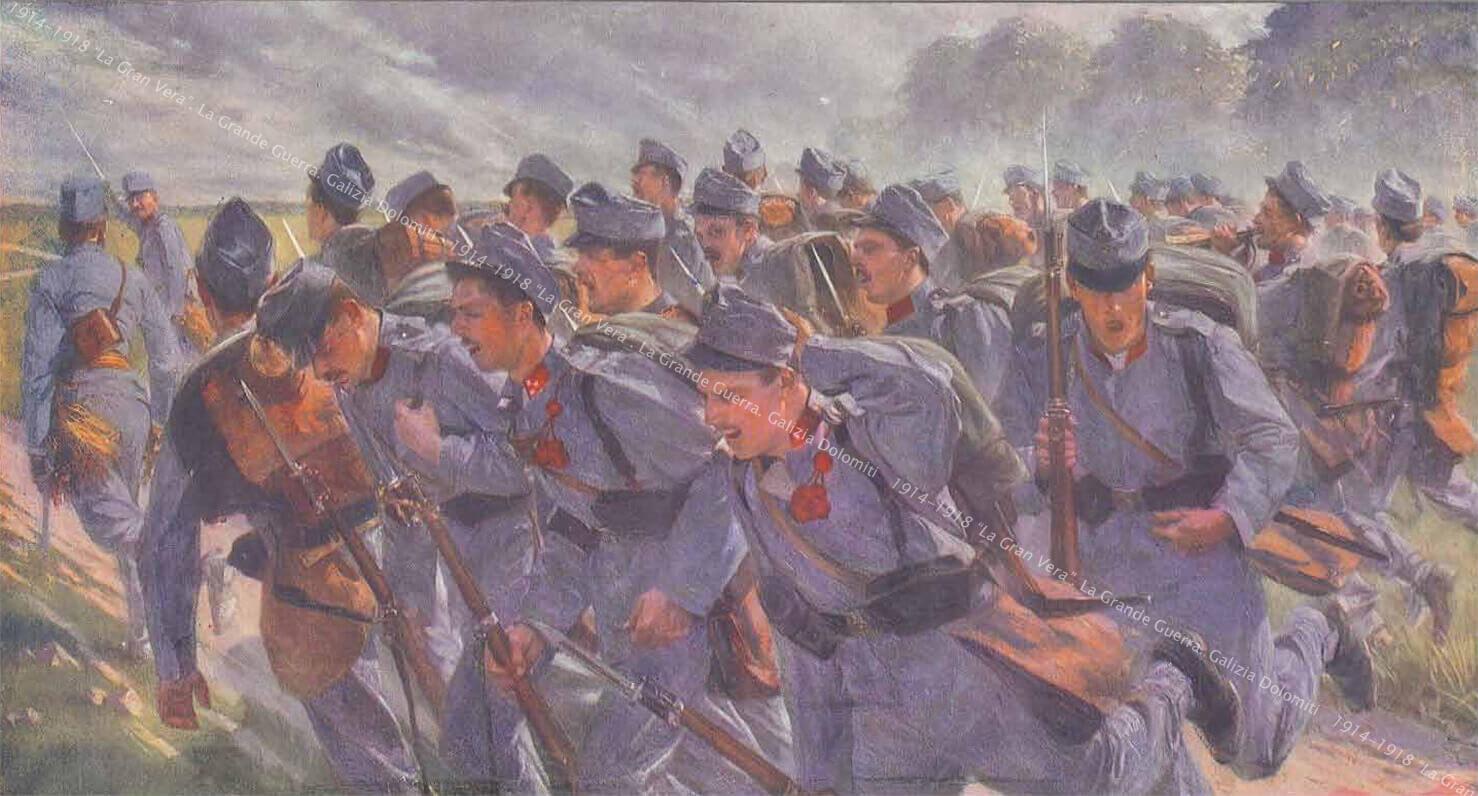
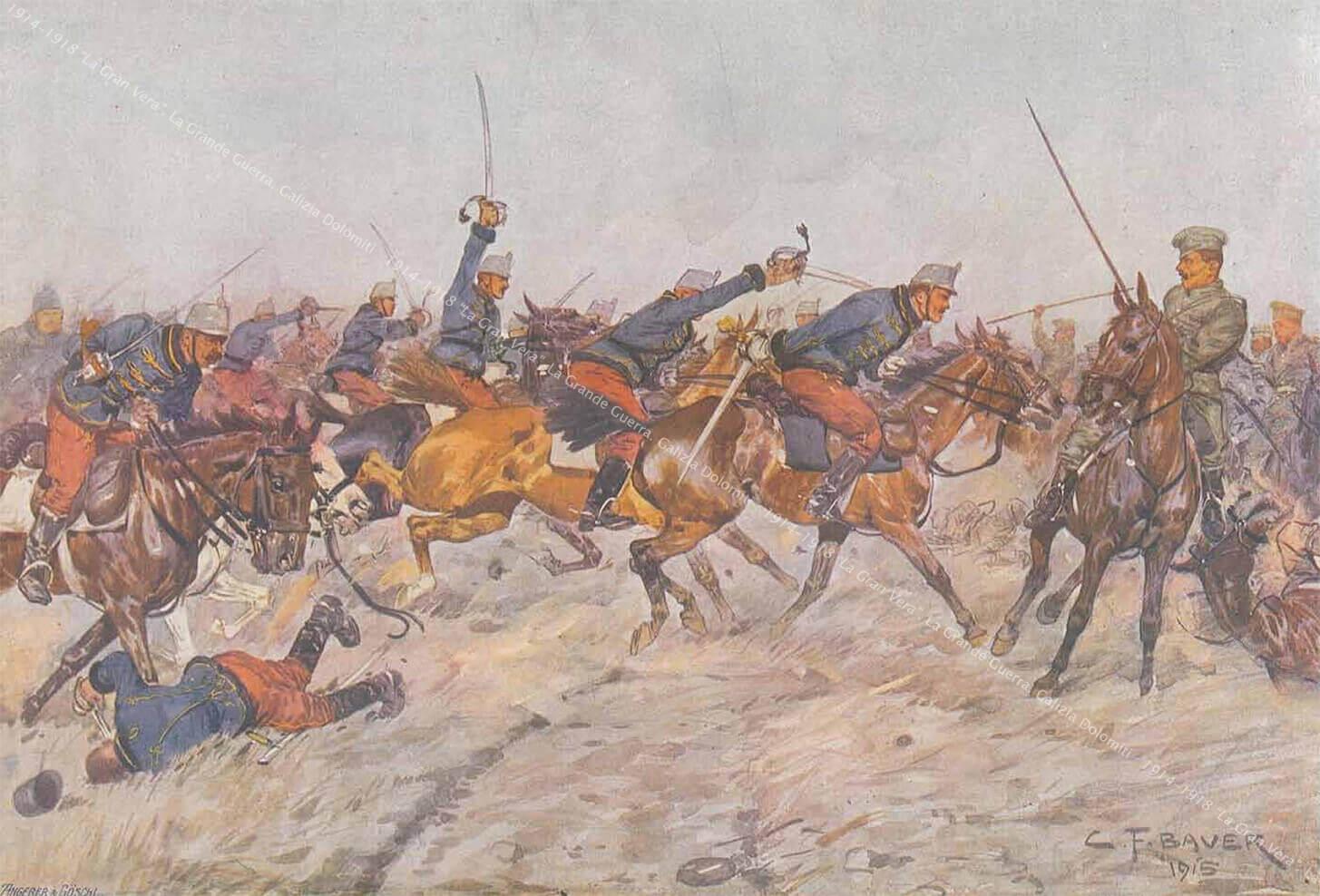
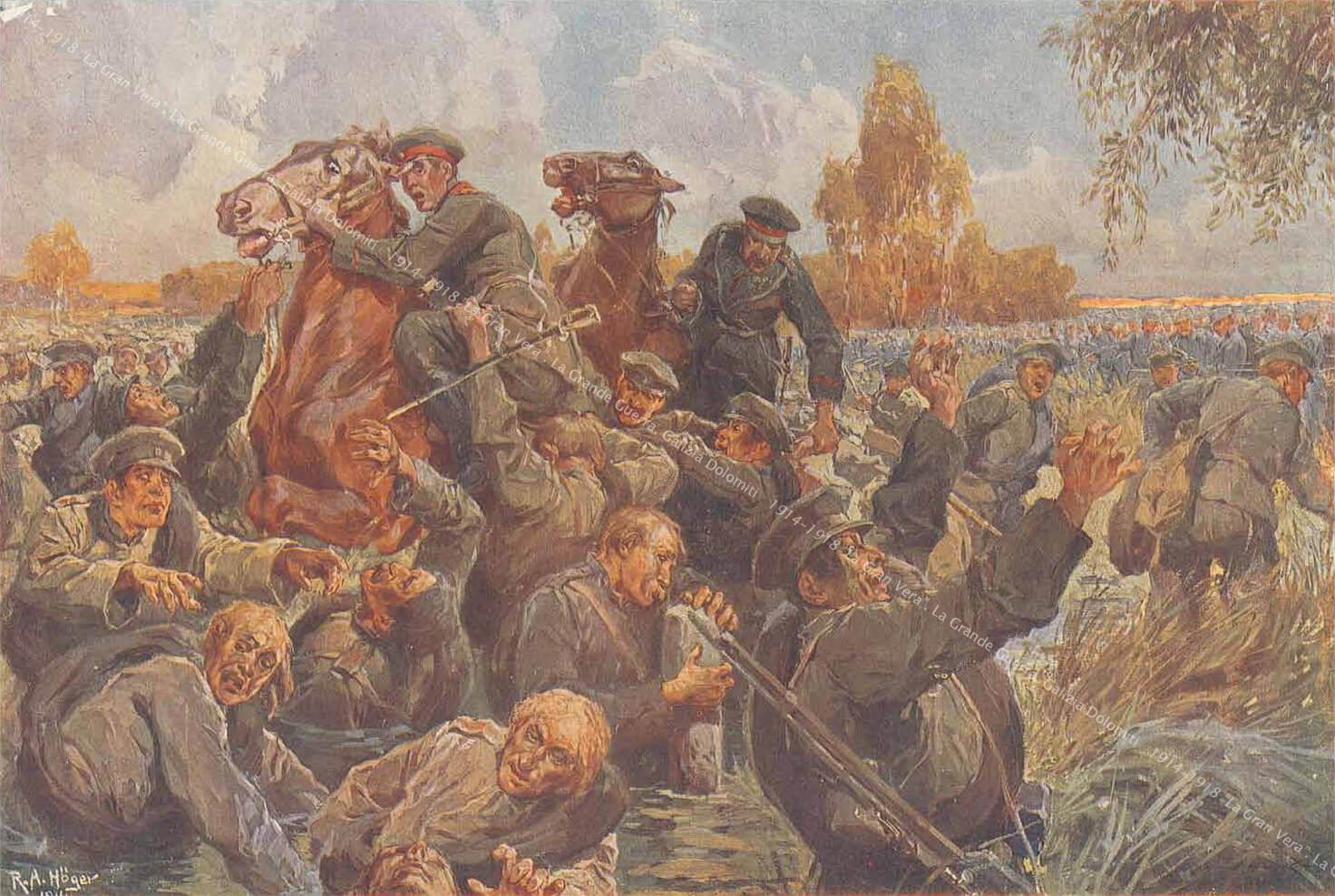
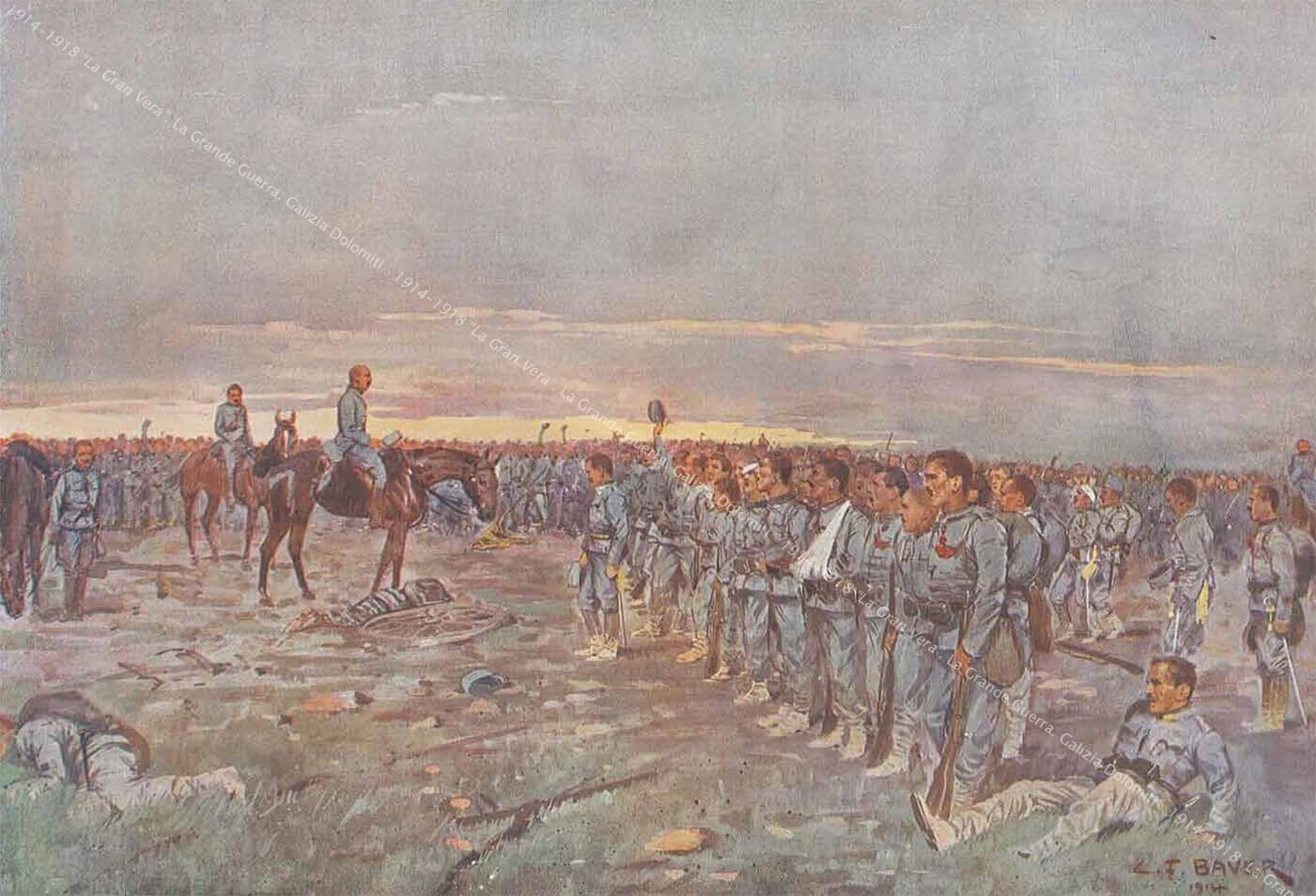
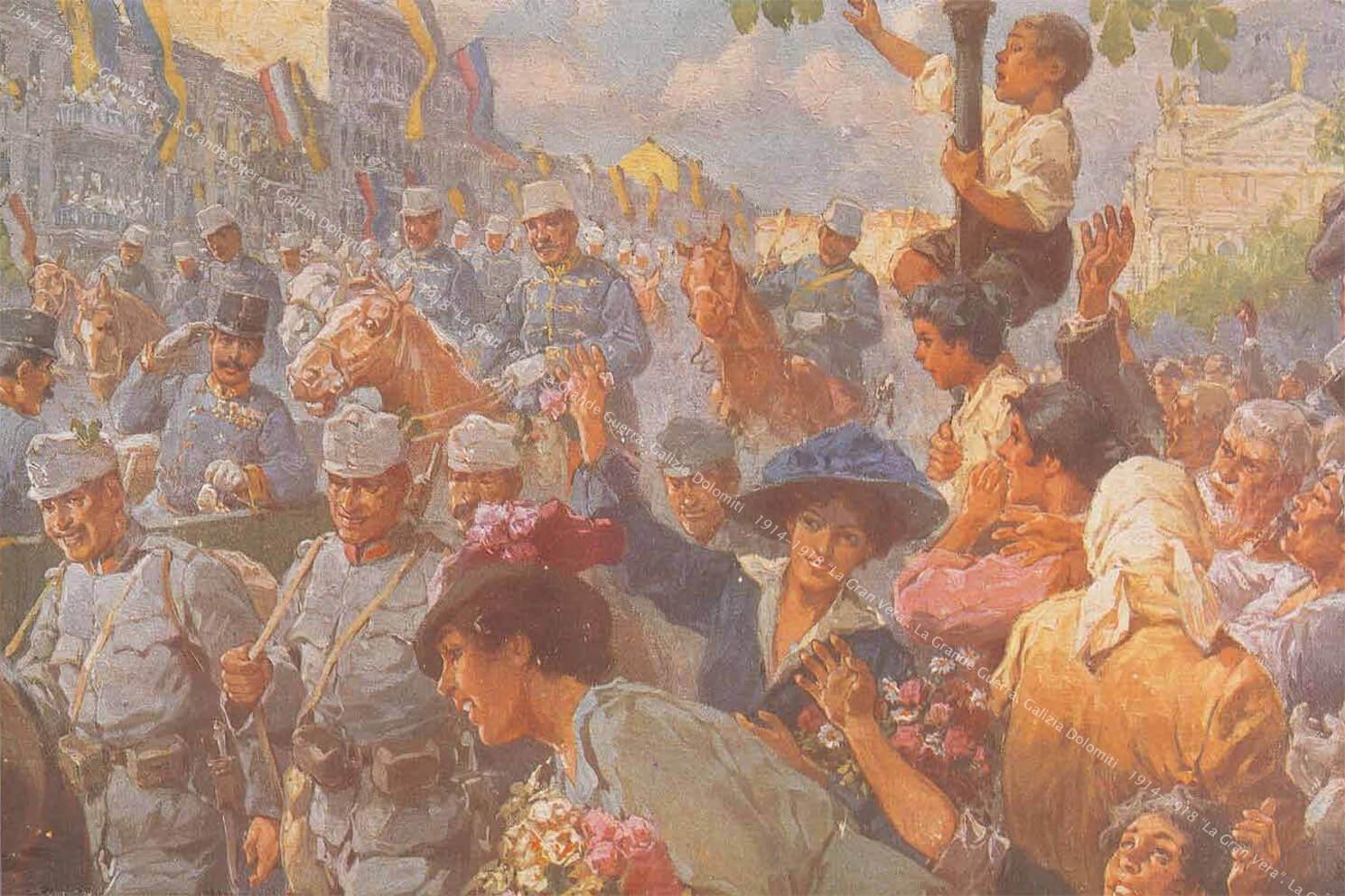
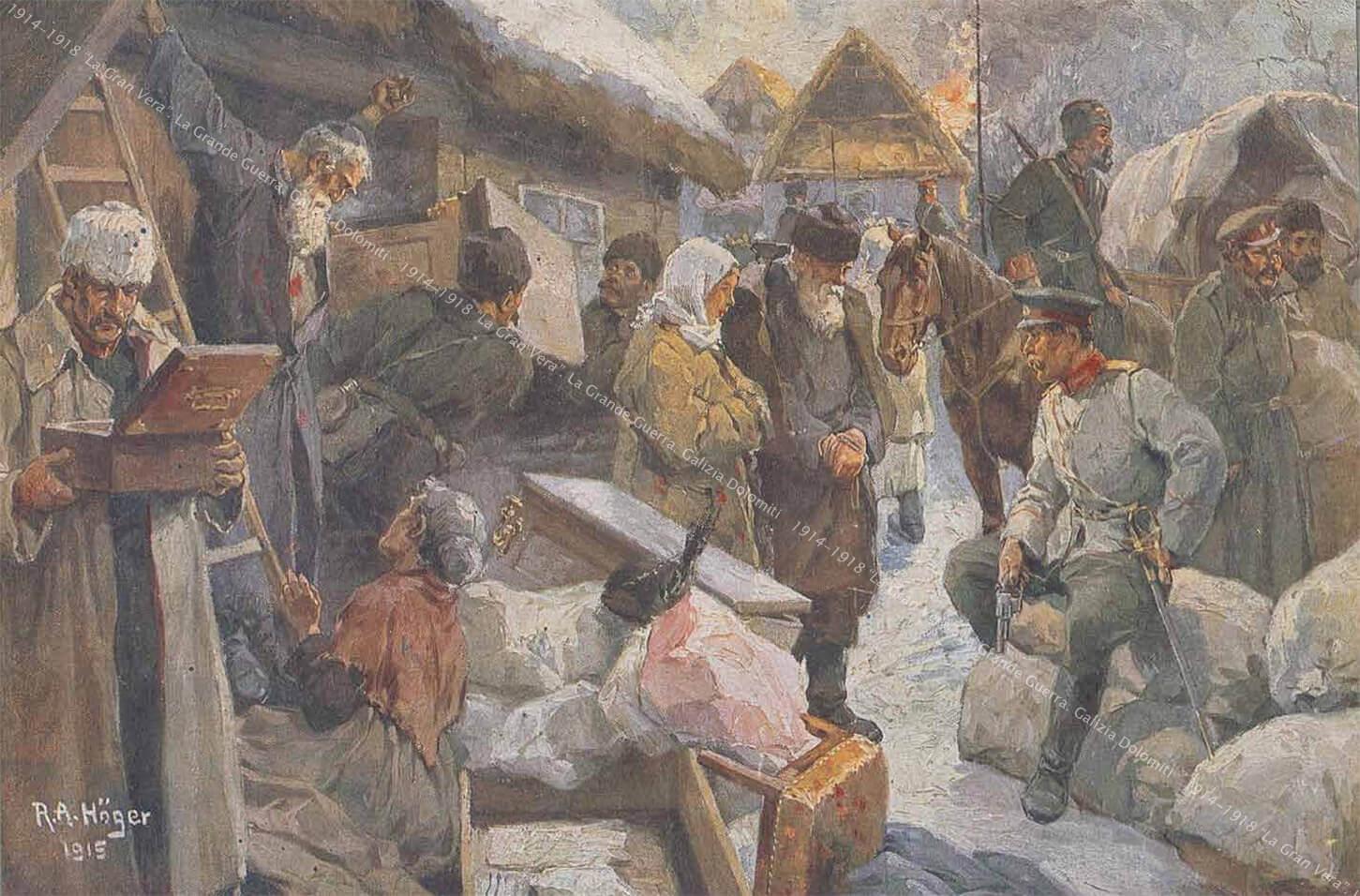
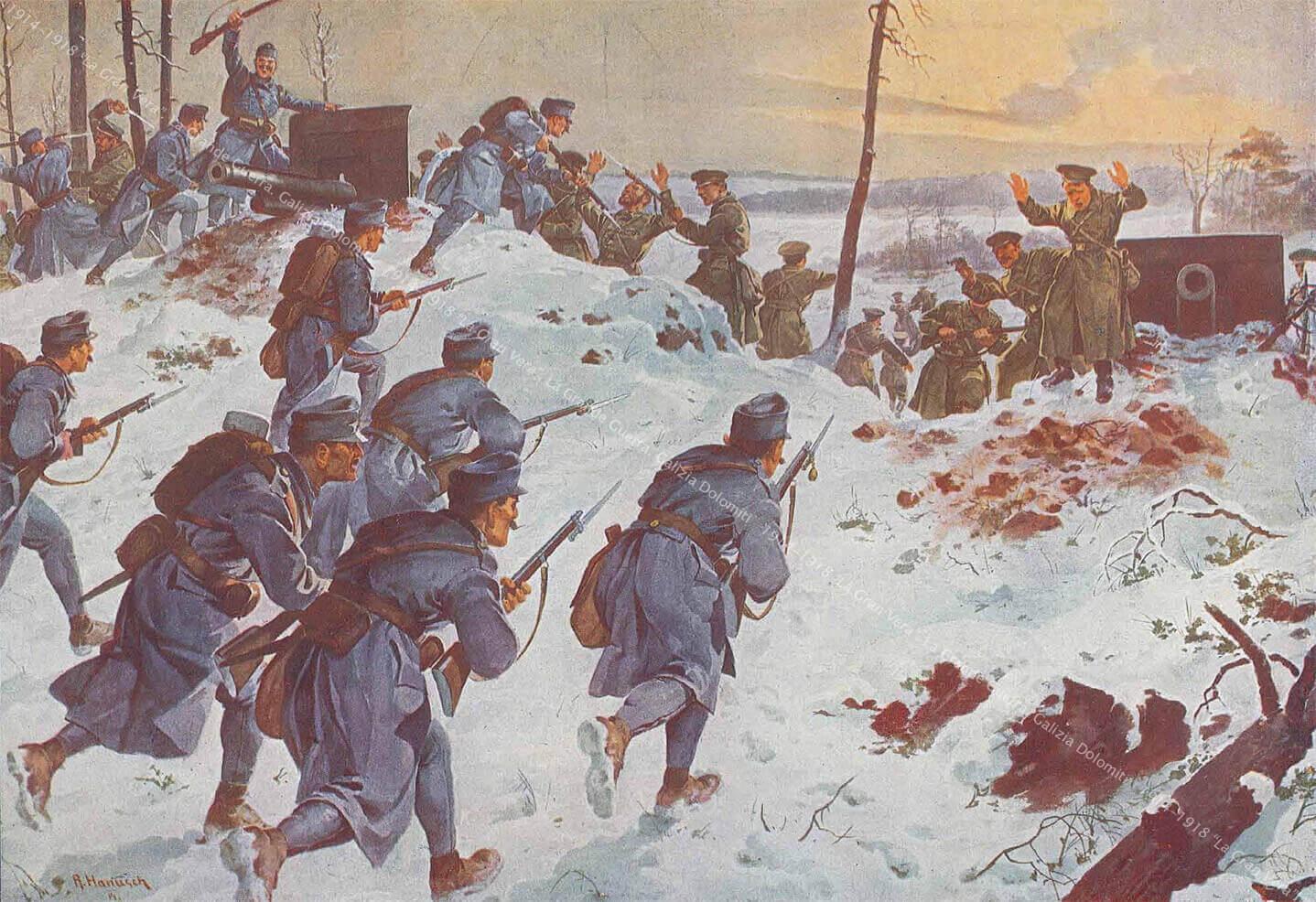
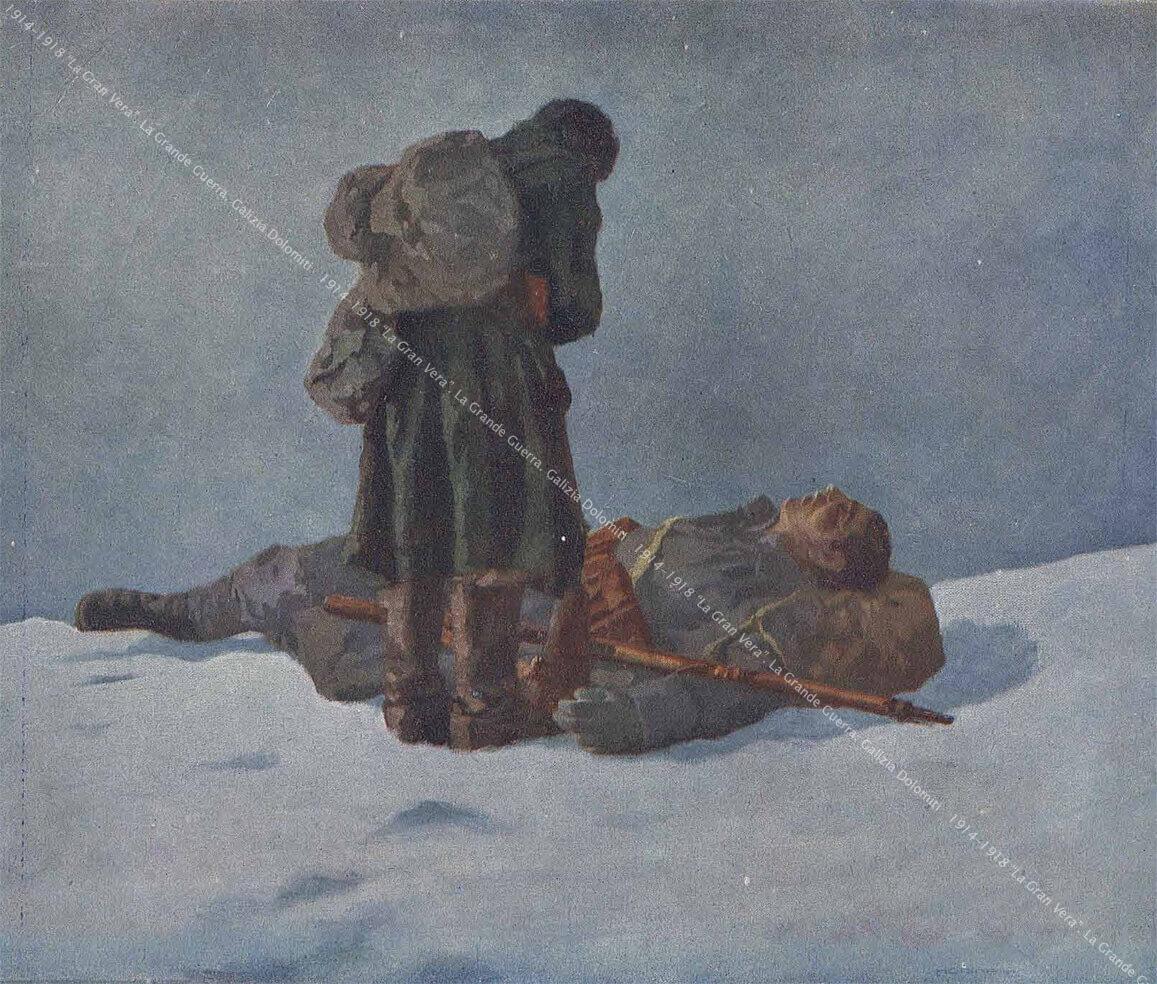

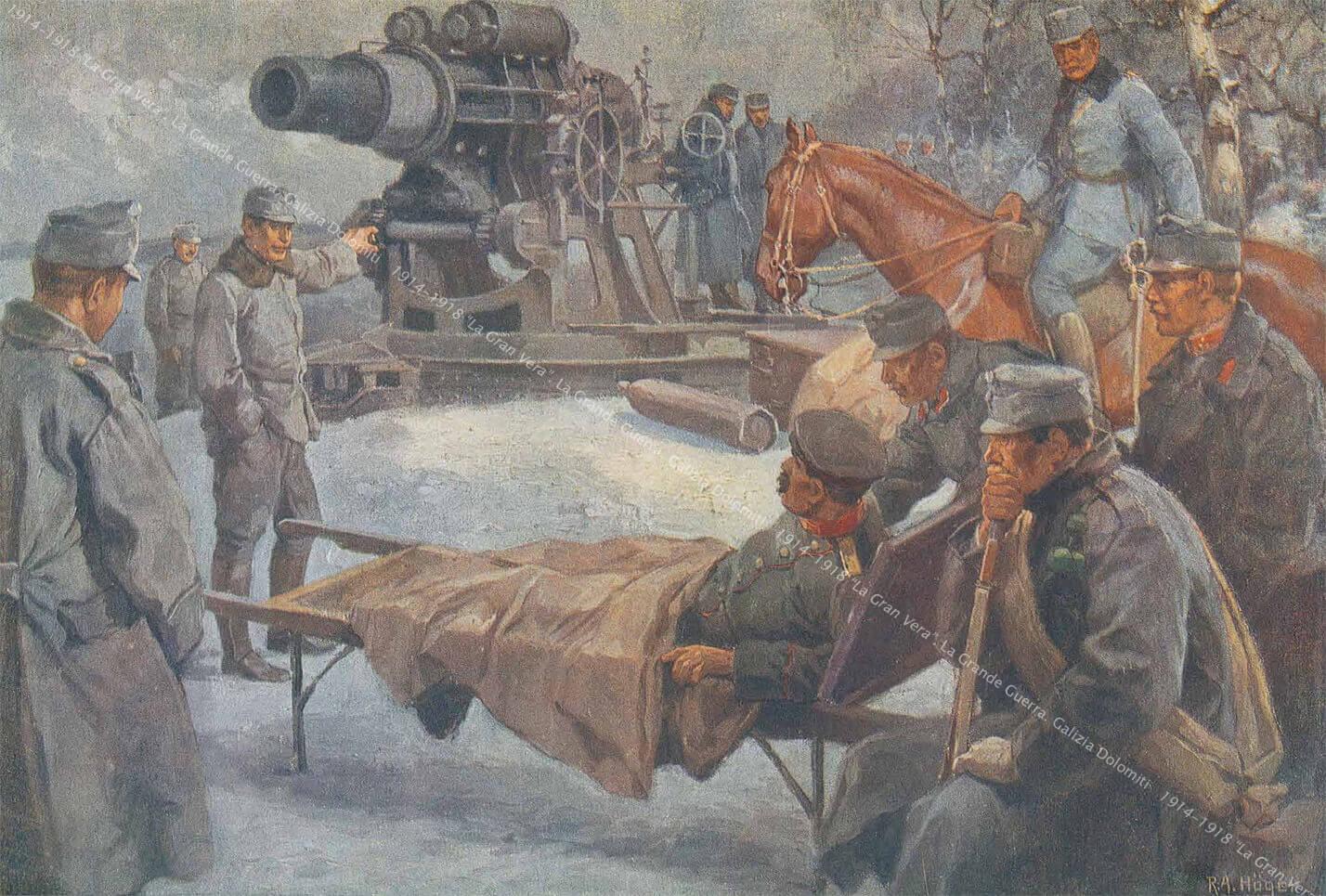
Border lands between the Austrian-Hungarian Empire, the Russian Empire and the Kingdom of Romania: one of the war’s most important fronts, and yet one of the least known.
High wooded hills, great cultivated plains, important rivers. Some key cities: Lemberg, Krakow, Przemysl, Czernowitz, Tarnow.
The remaining territory is a myriad of towns and little villages mostly inhabited by peasants.
Very hot in the summer, terribly cold in the winter, mud and rain.
After the Russian war declaration on 29 July 1914 and the general mobilisation of early August, this is where Ladin, Trentino and South-Tyrol German young men were sent to fight against an unknown and un-hated enemy.
Unexpectedly catapulted from their mountains into a terrifying modern world where industrial evolution turned humans into cannon fodder. The domination of technology over men that began in this war would make it impossible for them to find the world as they had left it, once they returned home.
Three and a half years of extenuating marches, masses of fighting men, trenches and forts taken and lost several times. A few million dead in battle, hundreds of thousands of prisoners, lost in the steppes or deported to Siberia, many who died of hunger, of hardship, of disease.
Civilians that were massacred and incalculable damage to the economy.
The mother of all battles, Przemysl, a fortified city, lost pride of the Austrian Empire, the Verdun of the Eastern front.
Austrian troops leaving for the Lemberg-Lviv area. This was the second batch of troops sent after mid-August. News of the countless dead begin to circulate. From this point on, the veritable massacre of the Eastern front begins. Russians began a massive attack of the Austrian troops. Among these, the Tyrol Corps, which got their men from Trentino, the Ladin valleys and the German-speaking basin between Salorno and Innsbruck. To celebrate their departure, soldiers decorated their alpenstocks with oak leaves, mythological symbols of heroes.
The map represents the Galician territory between Czernowitz (C) to the south-west, Lemberg (L) to the east, Przemysl (P) to the west, in the centre of the map, and Lublino (U) to the north.
We are early in the war and the first large confrontation between Austrians (blue lines) and Russians (red lines) is taking place.
On the previous days, the Austrians had easily occupied Lublino and the line of the Bug river (B), pushing eastwards against the Russians, who were not able to fight back.
The map shows the Przemysl (P) stronghold still in the hands of the Austrians, but soon the Russians invaded the entire territory, attacking Przemysl (P); the fight along the line of the San river (S) became ferocious.
With the help of the Germans, the Austrians regrouped, and on 10 October 1914 they once again took Przemysl (P) and Lublino (U).
Robert Musil called all this “breakwater battles”.
The position war begins. Soldiers sit in trenches to protect themselves and to defend the conquered areas. A bit at a time, these primitive grooves in the soil are, whenever possible, fortified with tunnels, covered paths and holes in the embankment that work as shelter and hideout for the soldiers turned into underground beasts.
In the trenches, life was lived on the naked earth, day and night, among mice and insects of all kinds.
No sanitary services were available. When food did come, it was often cold, undercooked, and appalling.
The climate in the regions where the fighting took place was hostile. The result was a very high number of deaths by typhus and cholera outbreaks, or by pulmonary disease. Poor young soldiers: dead and forgotten, in the endless count of those who fell while in battle.
300 shots per minute against attackers. It soon became the queen of the battlefield.
In the early years of the war, attacks were commanded by generals who were not professionally up to date and had no scruples whatsoever regarding the lives of their soldiers. These attacks often failed to provide successive results due to the lack of a true strategy; they were veritable and pointless carnages whose terrible results can be seen in the “War against war!” section of the exhibition.
The Russian advance led at least 300,000 people to move away from Galicia and Bukovina towards the safer territories of central Austria.
By the end of the war, among bombed cities and burned villages, 200,000 dwellings had been destroyed.
900,000 million Austrian crowns of industrial damage, fields criss-crossed by trenches and marred by huge holes, completely destroyed forests, devastated bridges and roads, as well as ruined monuments, churches and important historical archives. The economy of this blooming region was completely drowned.
World War I became an important incentive for the development of technology. Telephone, radio, aviation, gases, automatic weapons, transportation machines, digging machines, submarines, cableways, industrial use of rubber and aluminium were developed to the point that the face of Europe was completely transformed when the war ended.
“...arrived in Galicia with his regiment. Participated in bloody “breakwater battles” at first, not gaining any experience from them; they switched from train wagons to artillery fire, they rushed angrily forward to finally put an end to that desperate shooting, all of a sudden they were smashed to smithereens, fleeing, flying backwards like swarms, they were picked up and pushed forward again, they won and they lost, without ever knowing which.
The sensations that were left were hunger, thirst, hot, cold, tiredness, resting, satiety, an undefined distress and a similarly hard to define excited satisfaction, lack of conviction, adventure and journalistic sensationalism.
They were detached from intelligence, profession, art, sexual desire and similar feelings like a bone is detached from its meat”
R. Musil, Der Gesang des Todes.
Der singende Tod, in Gesammelte Werke; Reinbeck 1978.
Draft of a short story that was never finished, dated 1915-16.
Large-calibre bombing open huge, well-visible craters in the terrain.
This was one of the important structures of the belt of multiple forts that protected the city.
The Russian siege against the stronghold, designed to resist for 90 days, lasted 137.
When the Russians arrived, 7 million Austrian crowns were burned, 5,000 horses were slaughtered, and everything that could be destroyed so as not to be taken by the enemy was destroyed.
Przemysl counted on the defence of 128,000 men in 68 battalions, 14,000 horses and 1,000 cannons.
After another very strong attack, the Russians defeated the Austrians, forcing them once again to retreat all the way to the doors of Krakow (x).
The Przemysl (P) stronghold was again put under siege from 12 November 1914 to 22 March 1915, when it was taken.
The map shows that near Przemysl (P), around the little blue circle of Franz Joseph’s troops, is the red circle of the czarists.
That year’s great battles ended with the Austrian victory of Limanowa-Lapanow (LL), which definitely shooed the Russians away from Krakow. The battle, fought in December under Siberian temperatures and in extreme conditions, was the war’s umpteenth carnage, with more than 90,000 dead.
The map shows: to the south, Vienna (V) and Budapest (B); to the south-west, Czernowitz – Cernovcy (C) capital of Bukovina, currently in Ukraine; to the north-west, Leopoli – Lemberg – Livi (L), currently in Ukraine, Tarnow (T) currently in Poland, Krakow (X) and Limanowa (LL) Poland, Lublin (U) Poland, Breslavia – Breslau – Wroclaw (B), currently in Poland but back in 1914-1918 a German city of the Silesia region.
The front line left from the north of the Baltic Sea, in Riga (R), and reached the Roman borders in the Moldavia region. It remained more or less settled in this manner until the end of the war.
Note how all the fighting area in 1914 was occupied by Austrian-Germans (blue line), remaining to the west of the current front line, including Warsaw. Przemysl (P) was conquered back together with Lviv (L) in June; Brest Litowsk (BL) fell in August; in March 1918 peace was signed between the Soviets and the central empires.
Throughout 1915 important battles were fought and by the end of the summer the Austrian-Germans held: Galicia and Bukovina (today divided in half between Ukraine and Romania) to the south, Russian Poland, Courland and Lithuania.
In 1916 and 1917, the front was practically stabilised, with Russian attacks that never obtained significant results, with the exception of the attack by Russian general Brusilov, which, in the summer of 1916, forced the Austrians to retreat for about a hundred kilometres.
This last attack was a definitive blow on the Russian army.
The attack was concluded in October. The war in the Eastern front finished on 3 March 1918, with the victory of the Austrians-Germans.
The small box shows the four fronts of the Great War in Europe.
A) Western front: from the English Channel through Belgium and France, all the way to the border with Switzerland.
B) Italian-Austrian front: from the Stelvio Pass to the Adriatic Sea.
C) Serbian-Macedonian front: approximately from Vlorë to Thessaloniki.
F) Eastern front: from Riga to Moldavia.
The fortifications where he walked with his generals were not only destroyed by large-calibre bullets, they were also blown up by Austrians themselves prior to losing it.
The Austrians taken as prisoners by the Russians when the fortress fell, on 22 March 1915, were: 9 generals, 93 high officers, 2,500 officers, 117,000 soldiers and 4,000 civilians.
The loss of Przemysl was a very hard hit on the pride of the Imperial army.
War management by the upper echelons of Austrians and Russians was a disaster. The troops were mistreated, hungry and kept in inhumane conditions. This only worsened their performance, and the fighting spirit of the soldiers soon faded, to be replaced by a great and terrible resignation.
The supreme commands repeatedly made very serious mistakes, turning this forgotten front into a continuous see-saw of attacks and counter-attacks, with exhausting walks for hundreds of kilometres.
Light wounds which did not result in fatal infections became the hope to put an end to the soldiers’ suffering and perhaps even the glimpse of a possibility to return home in peace. Many soldiers voluntarily got themselves sick or wounded using plenty of creativity, with the goal of being cleared from military service.
After the first few months of war, the main commanders of all armies had to counteract the widespread habit of self-hurt, often using firing squads to execute those guilty of it.
Keeping oneself clean was a privilege. It simply was not possible to wash every day - not even every week. First of all, at the Eastern front the water was ice-cold for many months of the year. When warm water was available, one needed both time and a suitable place to wash. Of course some had ingenuous ideas to make do with what they had, as shown in the picture. Lice and skin conditions were a torment that constantly assailed the troops, making their everyday life absolute hell.
Being able to eat every day while in the battlefield was never taken for granted, just as making fire to come up with a warm meal was not. Eating healthy and nourishing meat or other foods was an exceptional event. Preparing food in a field kitchen as the one in the picture below required a level of luck that most certainly did not take place on a daily basis, especially during fighting. Russians and Austrians were always hungry.
There is no soldier’s diary that does not mention hunger or tells of how searching for food often put their lives at risk. During the war, the two most basic needs, surviving and eating, become the only true everyday anguish for each single fighter.
When we think of this terrible war, we all think of the fighting, of course. But we should keep in mind that soldiers were first and foremost builders and workers.
The picture shows the preparation of the nets that defended the trenches: soldiers were attempting to break the frozen soil with a pickaxe. The winter temperatures of the Eastern front led to numerous deaths by exposure and plenty of cases of frostbite.
For the Ladin and the soldiers from Trentino and the Germans from South Tyrol, the experience away from home was a huge shock: the distance, their being uprooted from their normal existence, leaving behind their homes, often located in territory with splendid woods and mountains, or in clean, lovely villages.
And the discovery of a new, flat and muddy landscape, the encounter with very poor and backward populations that lived in miserable shack villages, and, finally, all the death and the fighting were obviously very traumatic for many of the young men who fought in the Eastern front.
Russia
47 infantry and Cossack troop divisions
3,150 cannons
18 cavalry divisions
5,000,000 mobilised men
Austria-Hungary
32 infantry divisions
2,000 cannons
10 cavalry divisions
2,700,000 mobilised men
Soldiers departed from Tyrol and Trentino towards the front
28,000 Tiroler Kaiserjäger
21,000 Tiroler Landesschützen
14,000 Landsturm
63,000 men mobilised in 1914/15
In 1914, the percentage of soldiers who spoke Ladin or Italian amounted to 38-40%, when compared with German speakers.
Counting also the artillery regiments, a total of about 24,000 Ladin and Trentino soldiers were enrolled. From August 1914 to 31 December 1918, the Kaiserjäger lost 22,892 soldiers in the fight.
Russians
Mobilised men: 12,000,000
Dead: between 1,811,000 and 2,254,369
Civilian victims: 1,500,000
Austrians
Mobilised men: 7,800,000
Dead: approximately 1,100,000
Civilian victims: 467,000
(30,000 Austrians died in prison in Italy after the end of the war)
Summer cap of the Russian infantry, 1917, with the star on a black patch of the Black Battalions of the Legione Redenta di Siberia, to which converged the Trentino and Ladin prisoners released after the Soviet Revolution.
Russian woollen cap with fur lining belonging to Giuseppe Pettena Goti of Moena, born in 1890, prisoner in Russia, freed and returned home on 18 February in 1919. Granted by his son, Giacomo Pettena.
Wallet made of fabric with the regimental colours of the Kaiserjäger, belonging to Valentino Defrancesco Giuselon of Moena. Next to it, his watch chain used in the war, a uniform button, a rifle projectile preserved as a lucky charm, and another extracted from one of his wounds after the war, a tobacco box he sculpted himself, showing a Galician landscape, Imperial roubles and cigarette paper. Anti-Italian propaganda brooch showing an Austrian soldier and a Bersagliere.
Original album from which the Kriegsmaler paintings were taken.
Max Ritter Von Hoen, commander of the Press Office of the Austrian Supreme Command, understood that art had a crucial role to play in the war. This new war that was developing in Europe had technological and strategic dimensions unheard of up to that point.
Life conditions and battle experience had taken a new, fully unknown dimension.
Illustrating them would strengthen the patriotic and sacrifice spirit of the entire nation. In addition, the work of these artists, already appreciated by a very evolved civilian society such as pre-war Austria, would leave in heritage a very important memory of what was happening in the battlefield.
This is why a Kunstgruppe (artistic group) was founded in 1914 whose members were given the officially acknowledged status of “war painters and sculptors”.
Armed with special laissez-passer that granted them access to every part of the front, uniformed artists who were also officers began to produce a countless amount of works, serving their country with their artistic skills, rather than with a rifle.
The works were displayed in numerous exhibitions in various Austrian cities.
Below you will find a selection of works by very important artists, relative to the Galician front, included in the original catalogue of one of the many exhibitions held during the war.
In a world of static black-and-white photographs, the emotion of a colour painting made it possible to catch from up close the various aspects of this terrible tragedy.